2023 Inclusion at Hudl Report
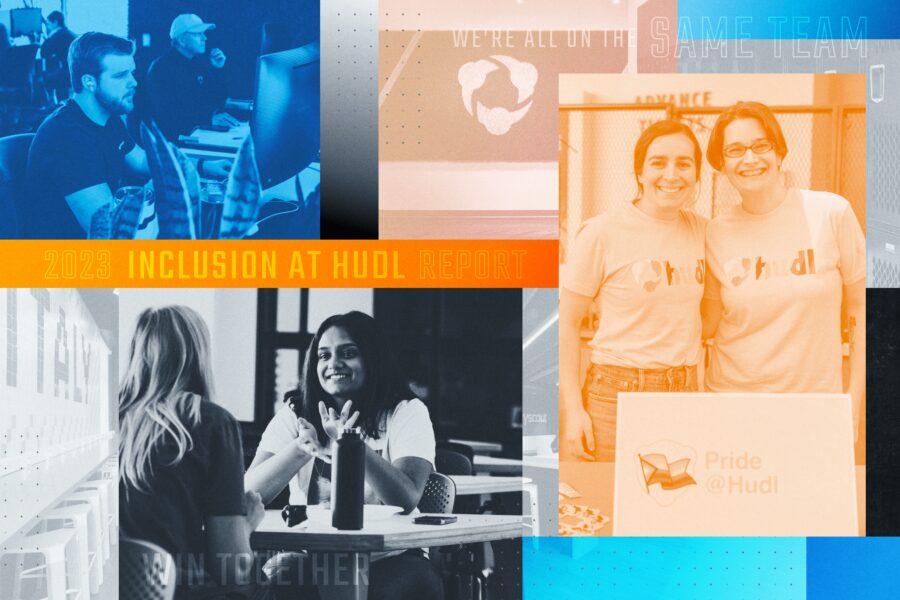

At Hudl, we know that in order to thrive at our level of scale and complexity, we need diverse leaders, employees and teams. In this report, we’ll look back on the 2022 calendar year and the progress we’ve made toward our diversity and inclusion goals; share our 2022 employee demographic data; and highlight how we’re moving towards a more inclusive Hudl in 2023 and beyond.
Inclusion truly is a journey. And if you're doing the little things right, you're going to progress along that journey. And the reality is for you personally, and for Hudl, there’s really no true finish line. We’re going to keep learning more and that finish line is going to keep pushing onward.
Inclusion doesn’t have a single finish line or metric—it’s a continuum of actions that all lead to a more inclusive workplace, company and society. As stated in our previous diversity reports (2021 and 2022), and in our statements on diversity and inclusion, we’re committed to maturing our approach to diversity, equity, inclusion, accessibility and belonging (DEIAB). Our process is filled with experimentation, wins, misses, ups and downs, all driven by our desire to learn from one another and our collective commitment to growth.
One of the cool things about building a business like Hudl is seeing how people from all different backgrounds bring so much value to the company. It’s shown over and over again how understanding different perspectives and different journeys actually leads to building better products and better outcomes for our customers. So for me, by building a company that values inclusiveness, we’re building a better product and we have a better connection with our customers.
Inclusive practices unlock the best in us as people, and as a company.
Hudl's purpose is to give every athlete the shot they deserve. At its core, this is about inclusion in sports—it's about giving all athletes an opportunity to use their unique skills, identities and experiences. We're driven by giving teams the tools to bring out the best in their athletes. The same needs to be true within our company.
As leaders in the global sports industry, we know there is power in diverse and inclusive teams. In year's past, we titled this report the "Hudl Diversity Report". This year, we've evolved the report to focus on inclusion. It's important we not only bring diverse talents, identities and intersectionalities together, but also make sure we can truly leverage the value that diverse teams provide. Our team members need to feel included, acknowledged, heard, respected and trusted.
Diversity without a culture of inclusion leaves a lot on the table and prevents us from fully realizing the benefit of the unique perspectives within our organization. We're building a workplace that welcomes diverse opinions, voices and backgrounds. We're building a workplace where each team member feels they're valued for who they are. We're pushing forward initiatives as a company, and celebrating individuals' progress. We're building a company that fosters innovation and gives every athlete—and Hudlie—the shot they deserve.
How We Make It Happen
Our core values drive who we hire, how we work, and every decision we make. When we apply an inclusive lens to our values, each becomes even more powerful.
- When we play to win, we grow in a way that’s socially responsible, provides as much access as possible, and leaves the world better than we found it. We know inclusivity is a worthy pursuit, and it’s worth giving it our best—even if that means taking big swings and missing at times.
- When we win together, everyone at Hudl enters an environment that’s welcoming, where people feel like they belong, and there’s a strong foundation of trust. We’re building an experience that allows everyone to thrive and reinforces that we’re people first, co-workers second. We treat one another with respect and know that we’ll accomplish more when we’re considerate and curious about what we each bring to the table.
- When we thrive on the front lines, we consider the lived experiences of others to build better products for our customers and better experiences for our fellow Hudlies. We get out of our comfort zone to build empathy for different views and backgrounds.
- When we listen, we ensure diverse voices are represented in the products we build and the decisions we make. We’re humble and curious—quick to seek out diverse perspectives and new approaches before defaulting to our own. We listen to truly understand, not just to reply.
- When we’re respectfully blunt, we can have critical conversations that build each other up in the process. We’re not afraid to get a little uncomfortable in confronting where we need to grow, but these conversations come from a place of care. Feedback around inclusive behaviors can sometimes be difficult, but it’s how we grow. We foster a space of trust so brave conversations can be the norm.
Inclusion can unlock the best in us as individuals and as a company. Ultimately, an inclusive Hudl will help us fulfill our mission and purpose. But it requires intentionality and it’s a practice. In order to cultivate a culture of inclusion, we’ve identified five principles that build upon our core values, mission and purpose and can guide our individual and collective actions.
- Seek out disruptive experiences: We push ourselves out of our comfort zones to interrupt our usual patterns, think globally, and uncover unconscious biases. We inevitably make mistakes—but we learn and grow from them.
- Co-create purposeful culture: With people located all over the world, our culture is built on valuing differences. We know they only strengthen our ability to achieve our goals, which is why we support every Hudl employee being their true self at work.
- Build intentional habits: We’re all responsible for breaking down any barriers to participation and belonging. We encourage everyone to be mindful about engaging in inclusive communication and processes.
- Exercise social responsibility: We care about the well-being of our communities and society as a whole. We know sports have the power to unite, and we’re dedicated to equal access to opportunity, regardless of race, gender, (dis)ability, forms of neurodiversity or socioeconomic status.
- Lead by example: Our leaders exemplify these actions every day, own their missteps and reflect on areas for growth—but they’re not the only ones. Inclusive leaders can be found at every level of our organization, which is how we think it should be.

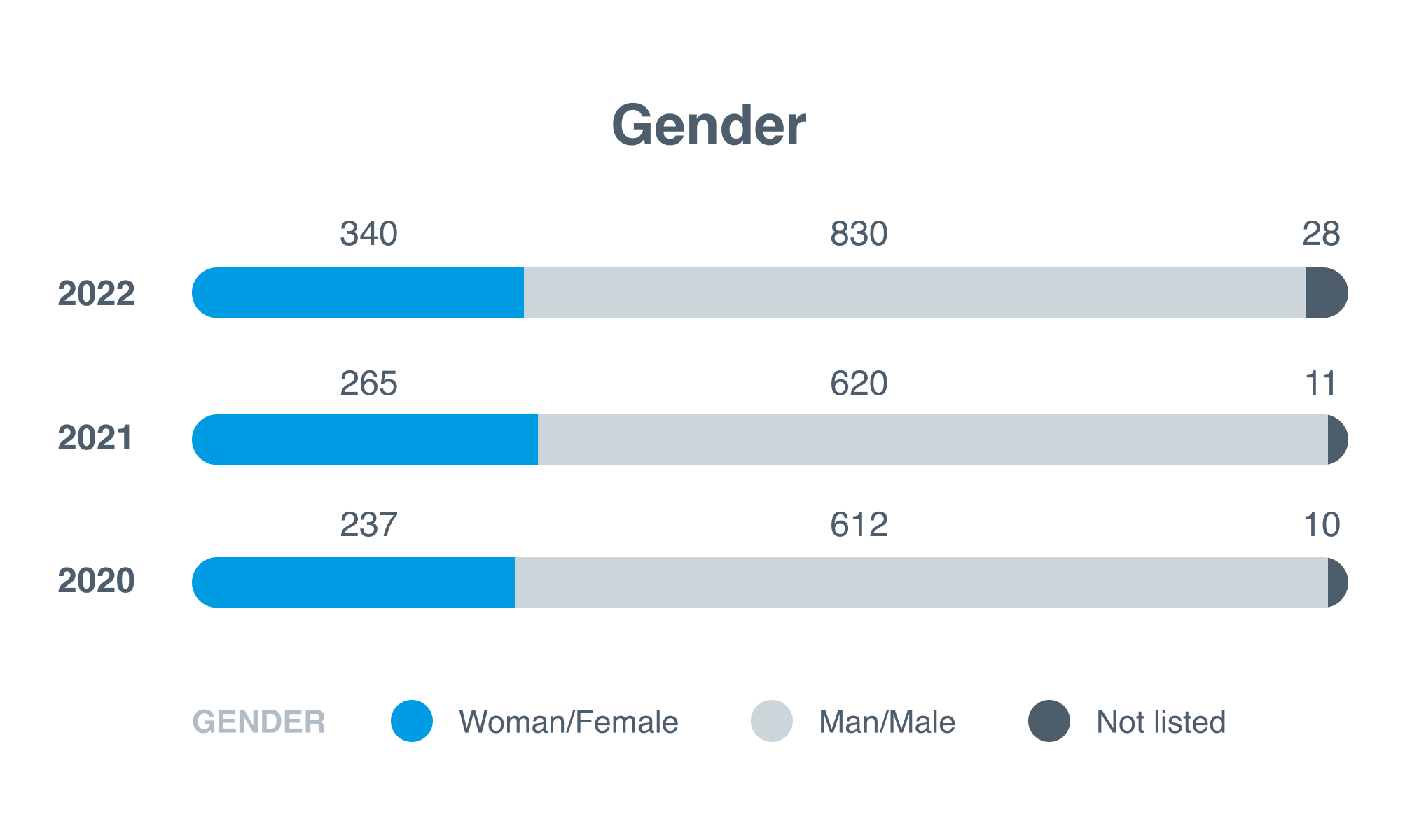
Growth of women employees in 2021 outpaced growth for the company overall and represented 29.6% of all Hudlies. In 2022, the rate of growth among men outpaced women, which drove the reduction in percentage of women overall to 28.4%, despite the net growth. No employees self-identified as genderqueer or gender-nonconforming in our system as of 31 December 2022.
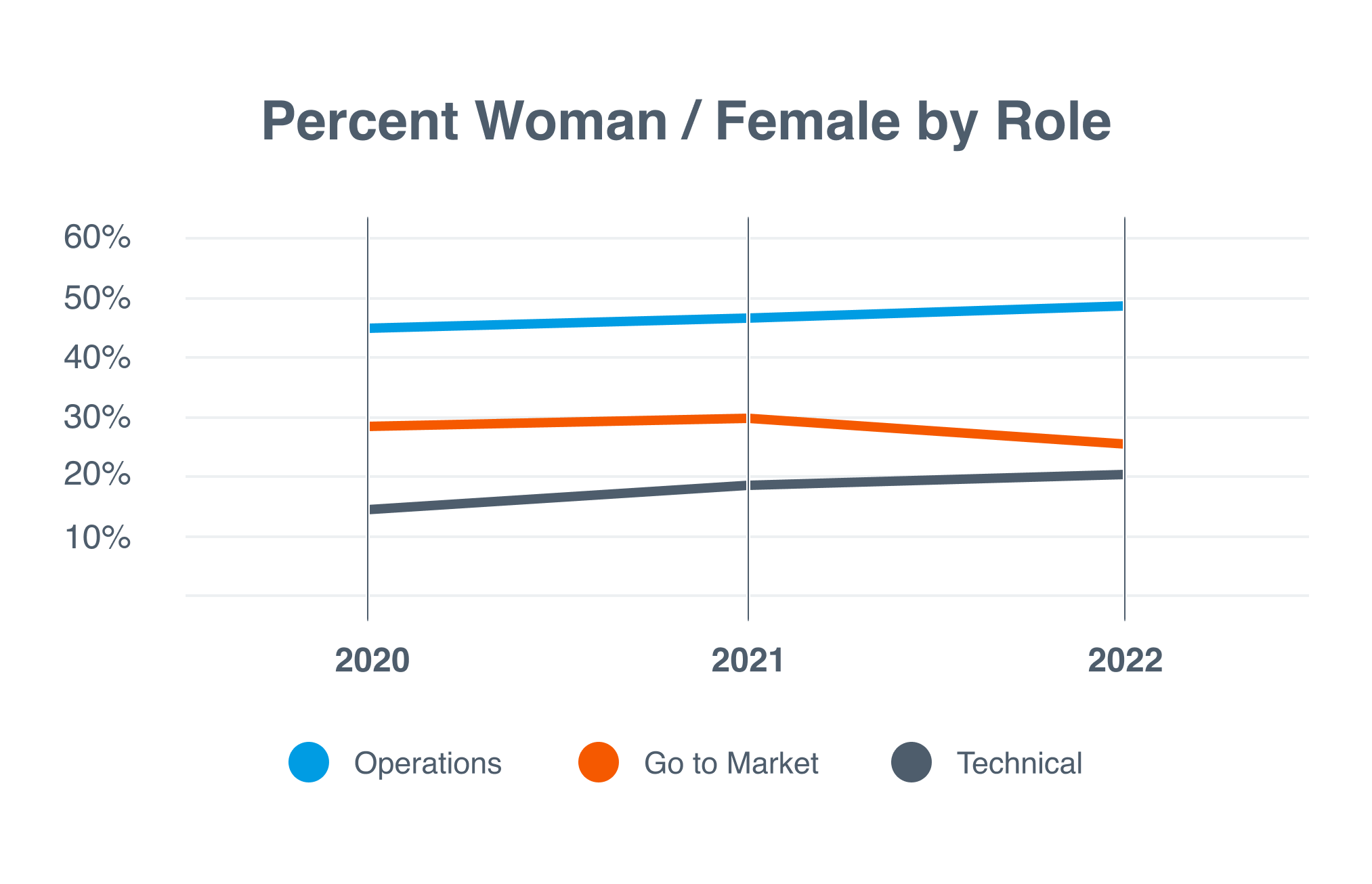
Although the technical space has the lowest percentage of roles filled by women, the percentage has increased every year since 2020. Operations has the highest percentage of roles filled by women and has similarly seen growth since 2020. Go to market roles held by women decreased slightly in 2022, both in number and percentage.
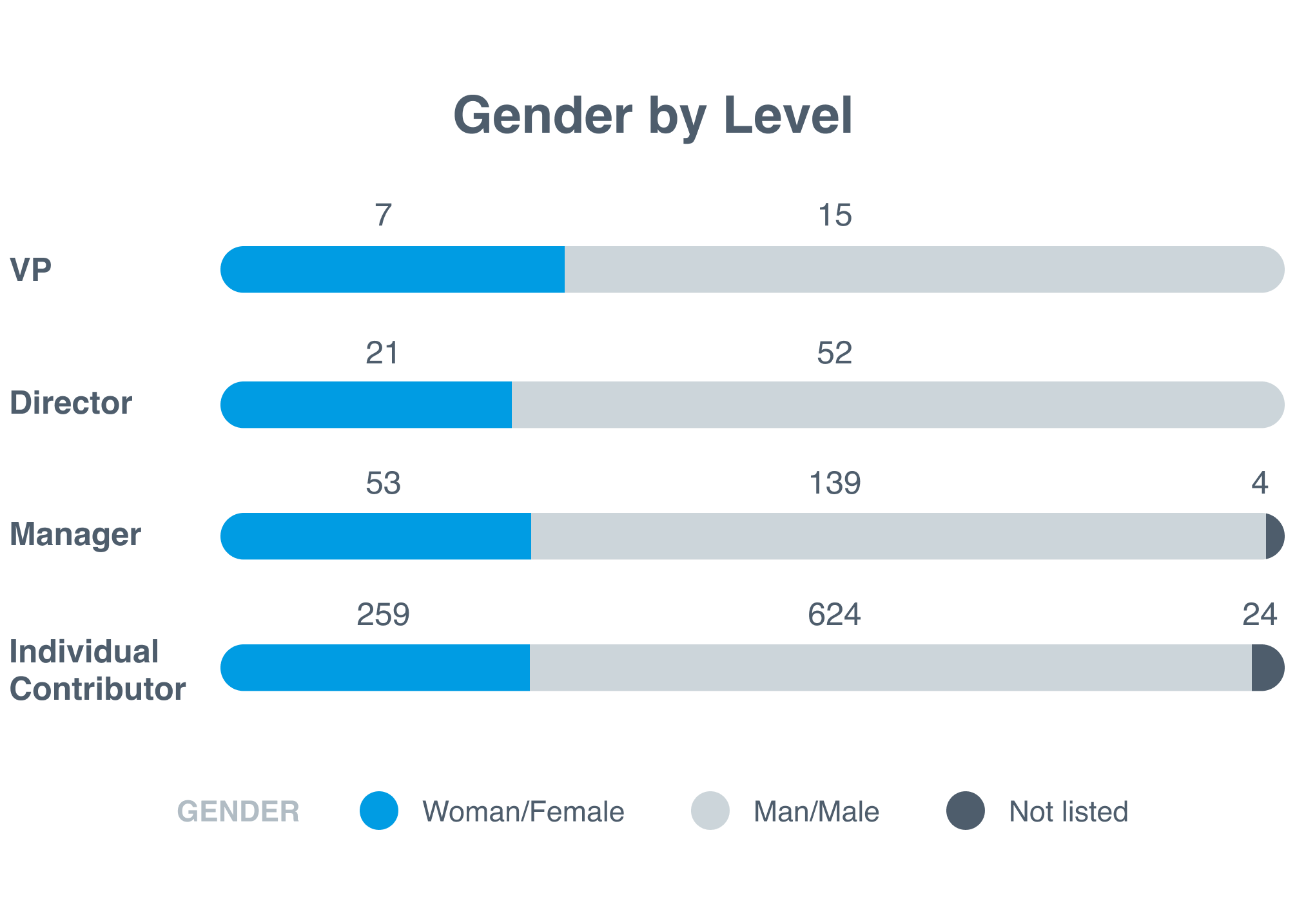
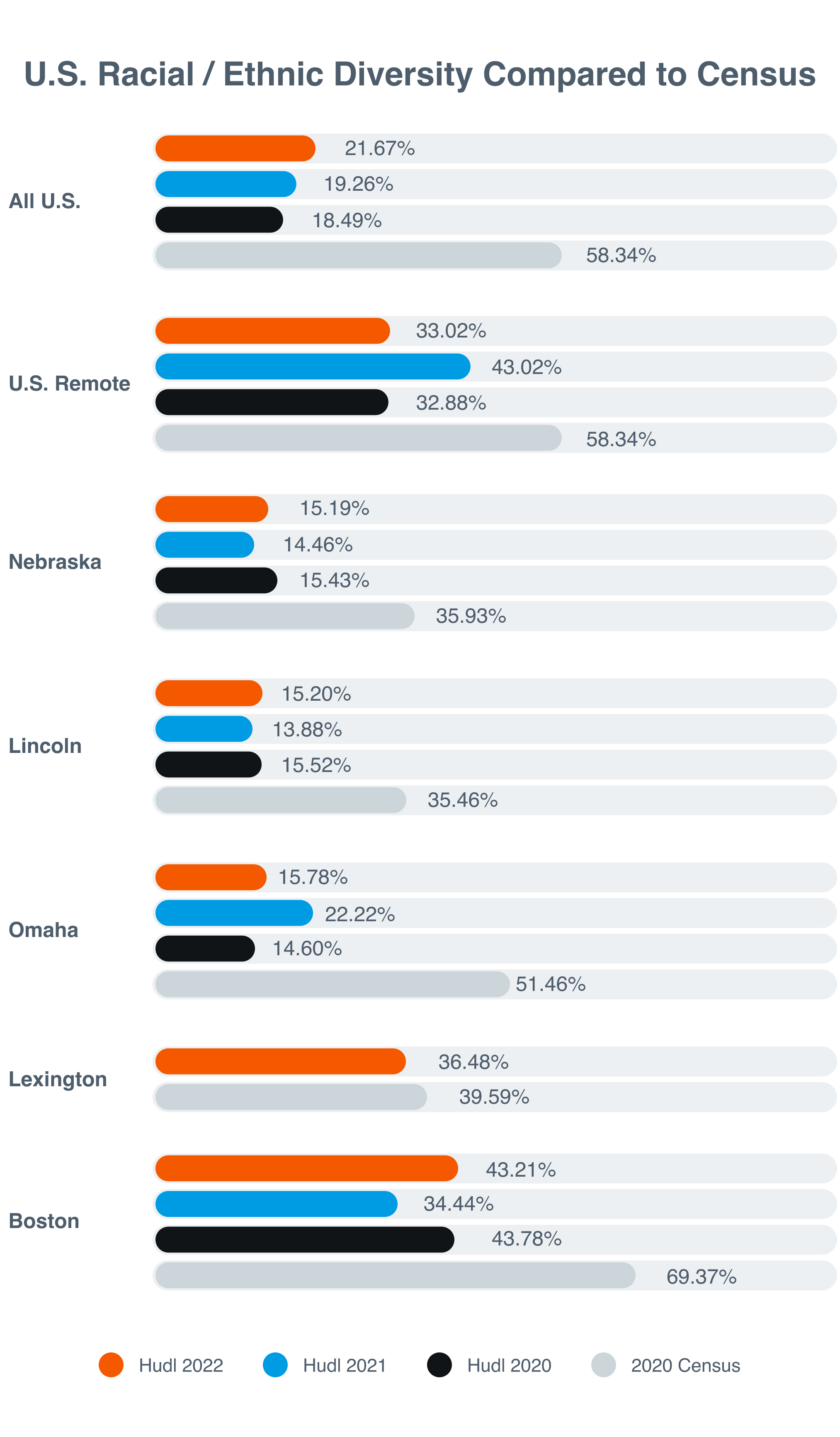
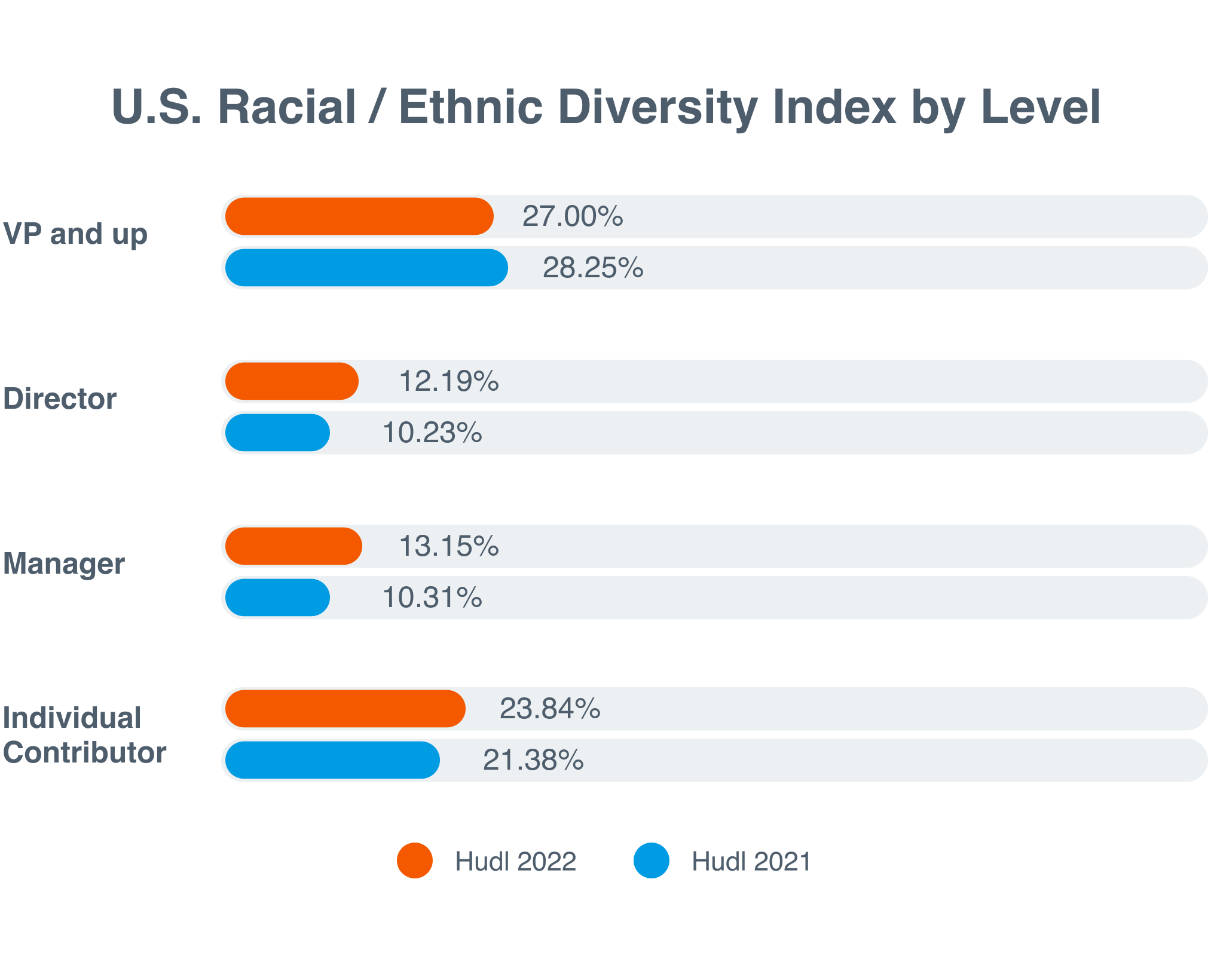
Long term, we’re focused on making sure gender and racial/ethnic diversity at the leadership level is at least on par with total company metrics. VP and up saw a slight decrease in index, but remains higher than the rest of the company. As seen in this chart and above, we see our index percentage drops off from the individual contributor level to manager and director. This shows that we need to identify biases and bottlenecks that are reducing representation at managerial levels.
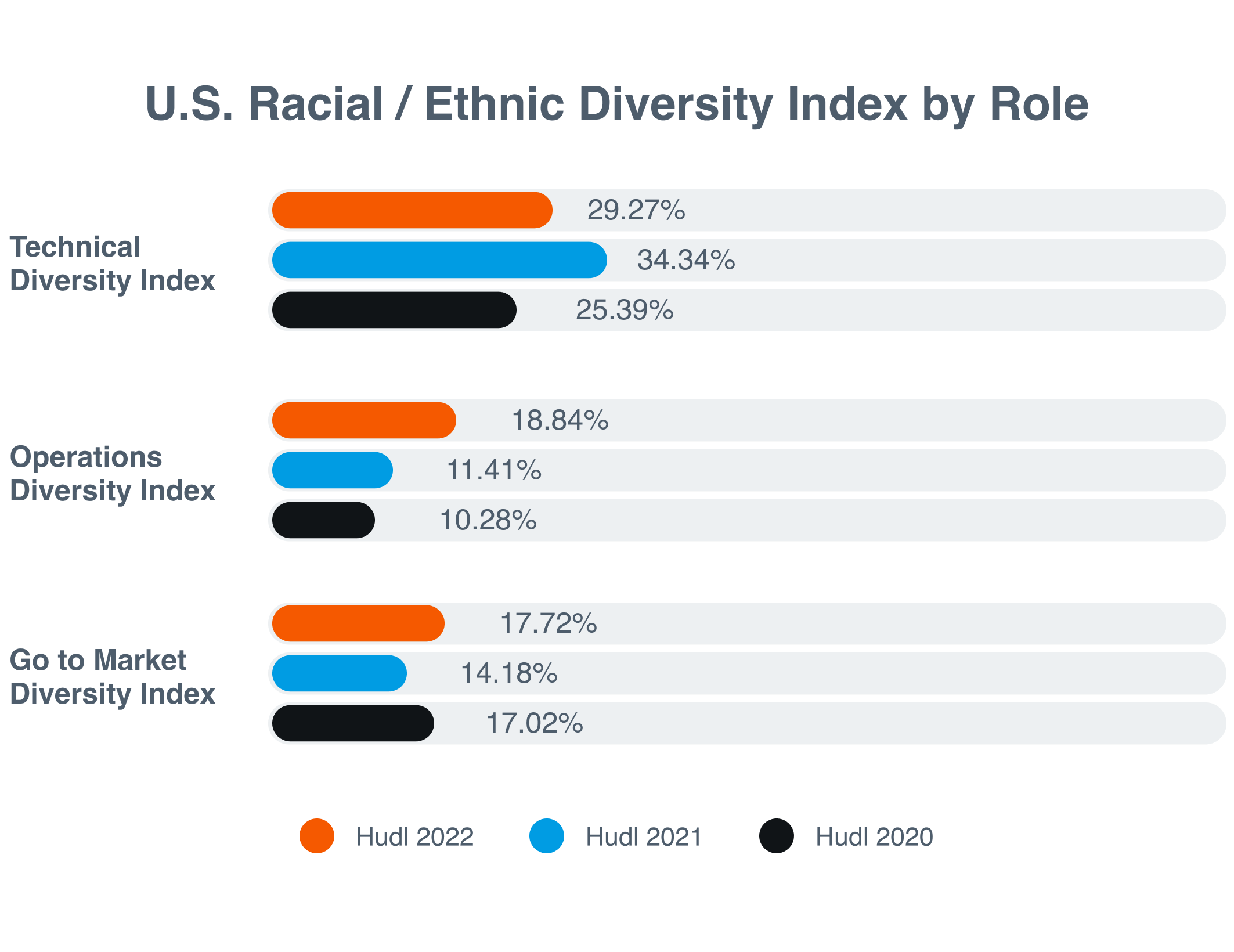
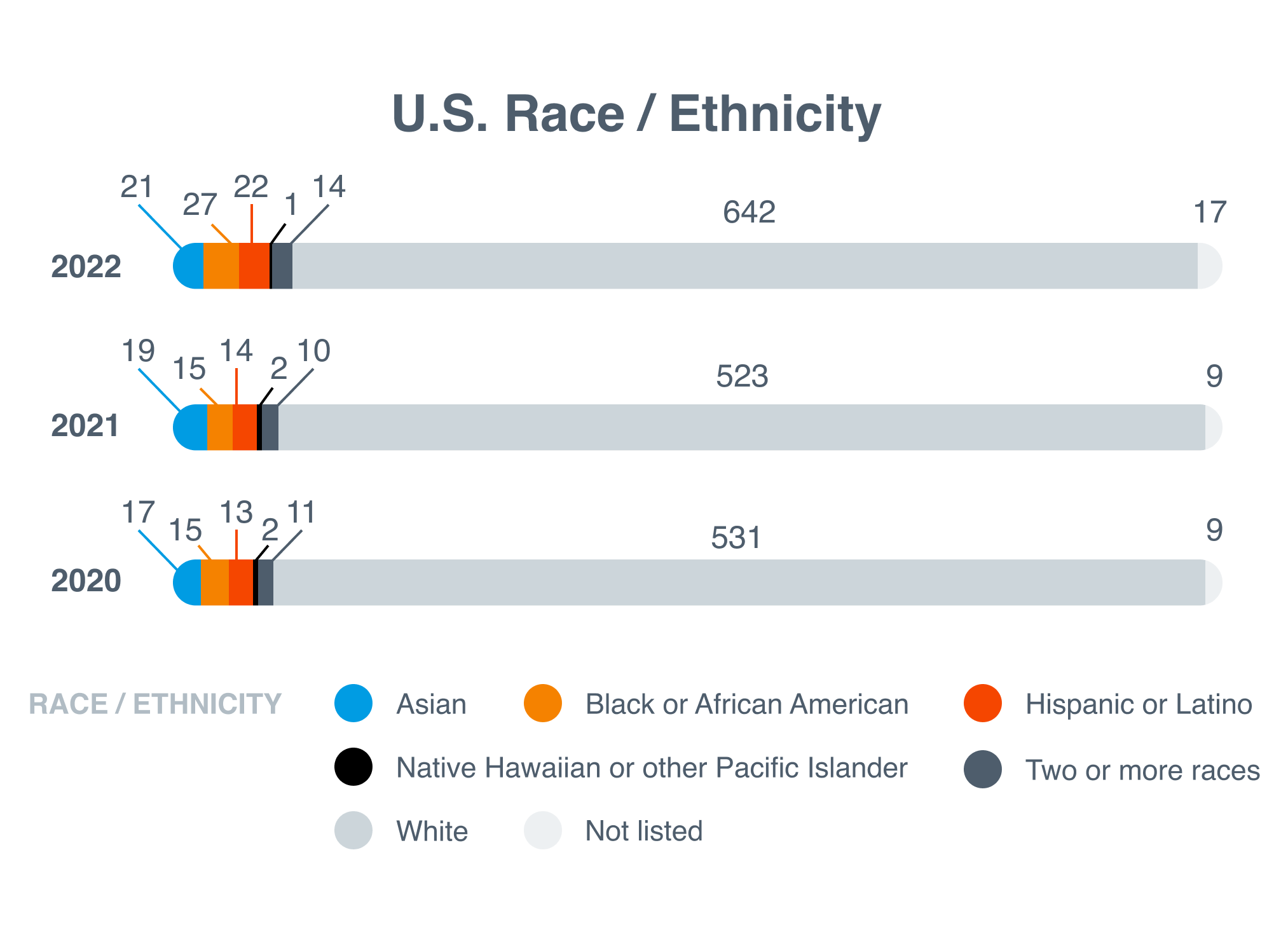
While the overall number of employees has increased since 2020, the percentage identifying as white has remained around 87%. The distribution of Hudlies identifying as Asian, Black or African American, Hispanic or Latino, two or more races, or not identifying their race/ethnicity has fluctuated from between 2% to 3% per group; Native Hawaiian or other Pacific Islander has remained less than 0.5%. No employees self-identified as American Indian or Alaska Native in our system as of 31 December 2022.
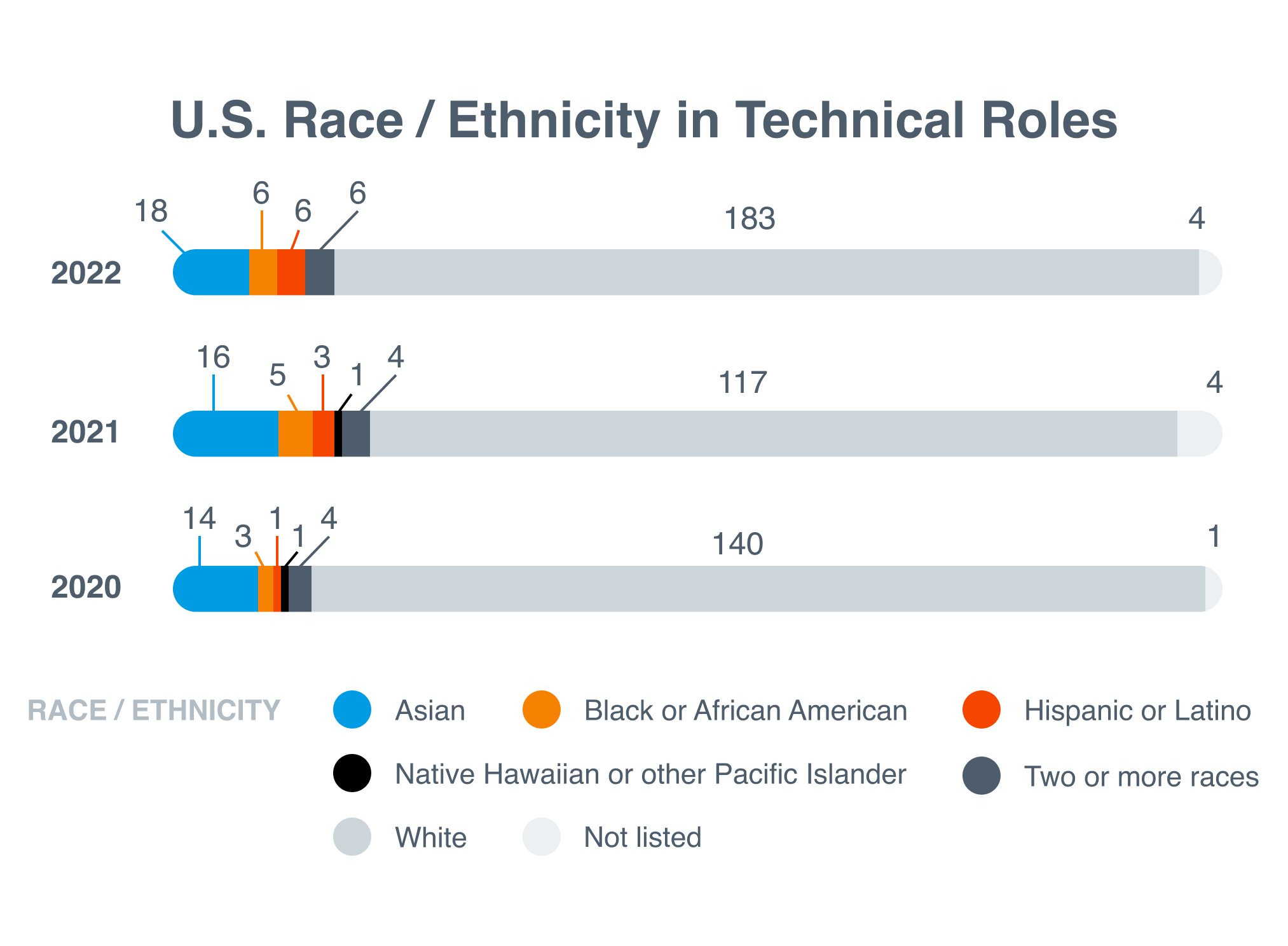
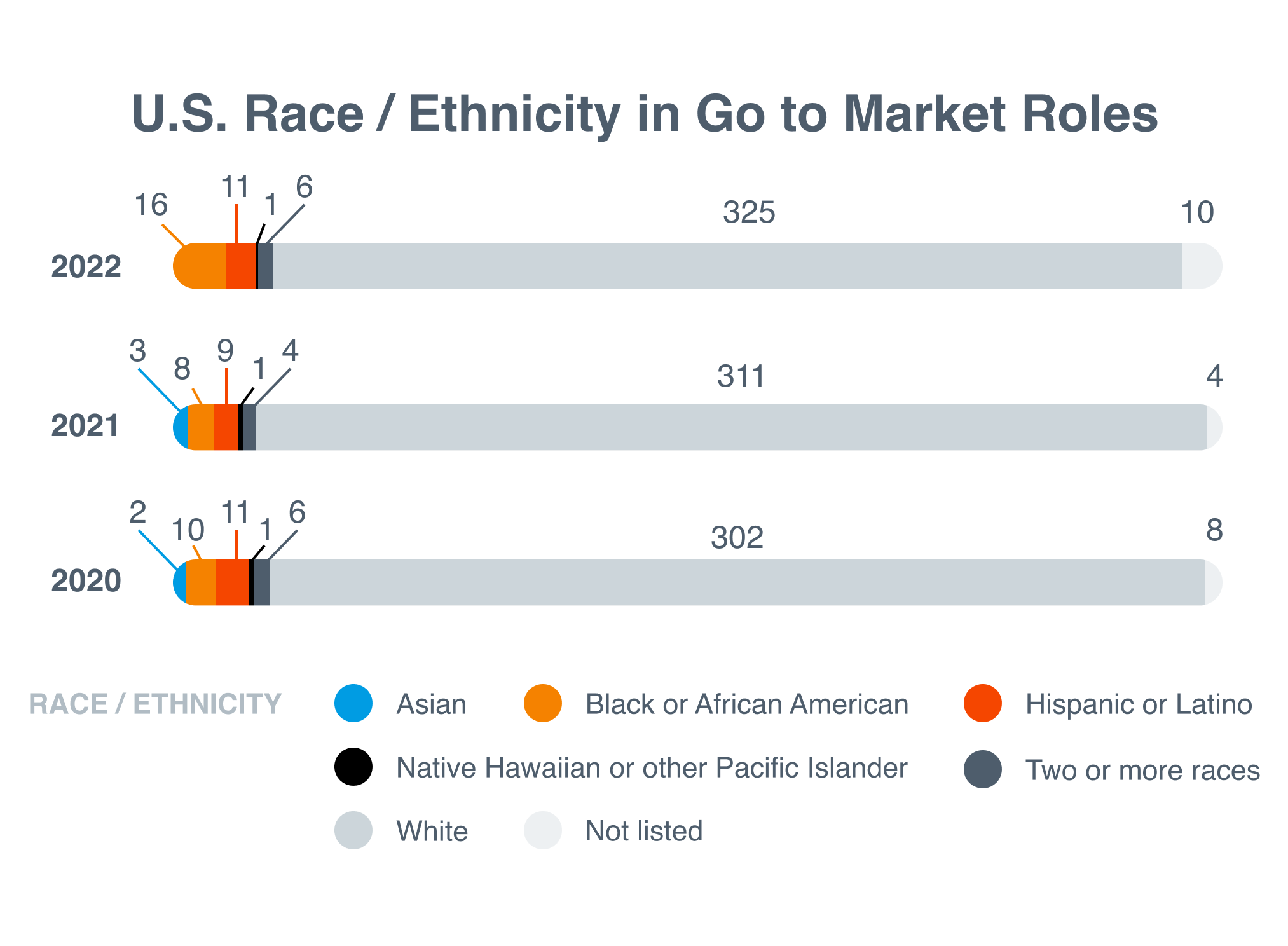
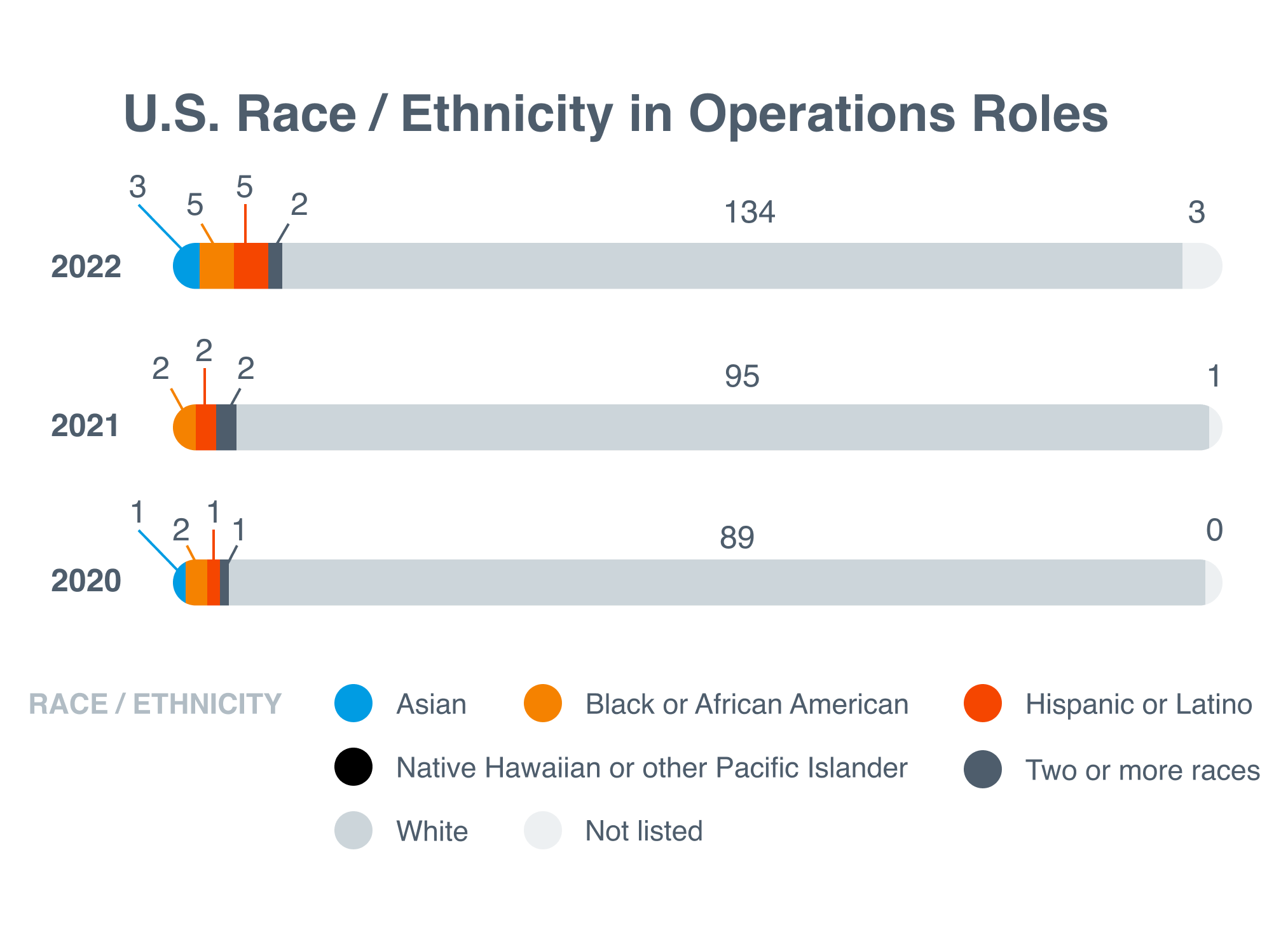
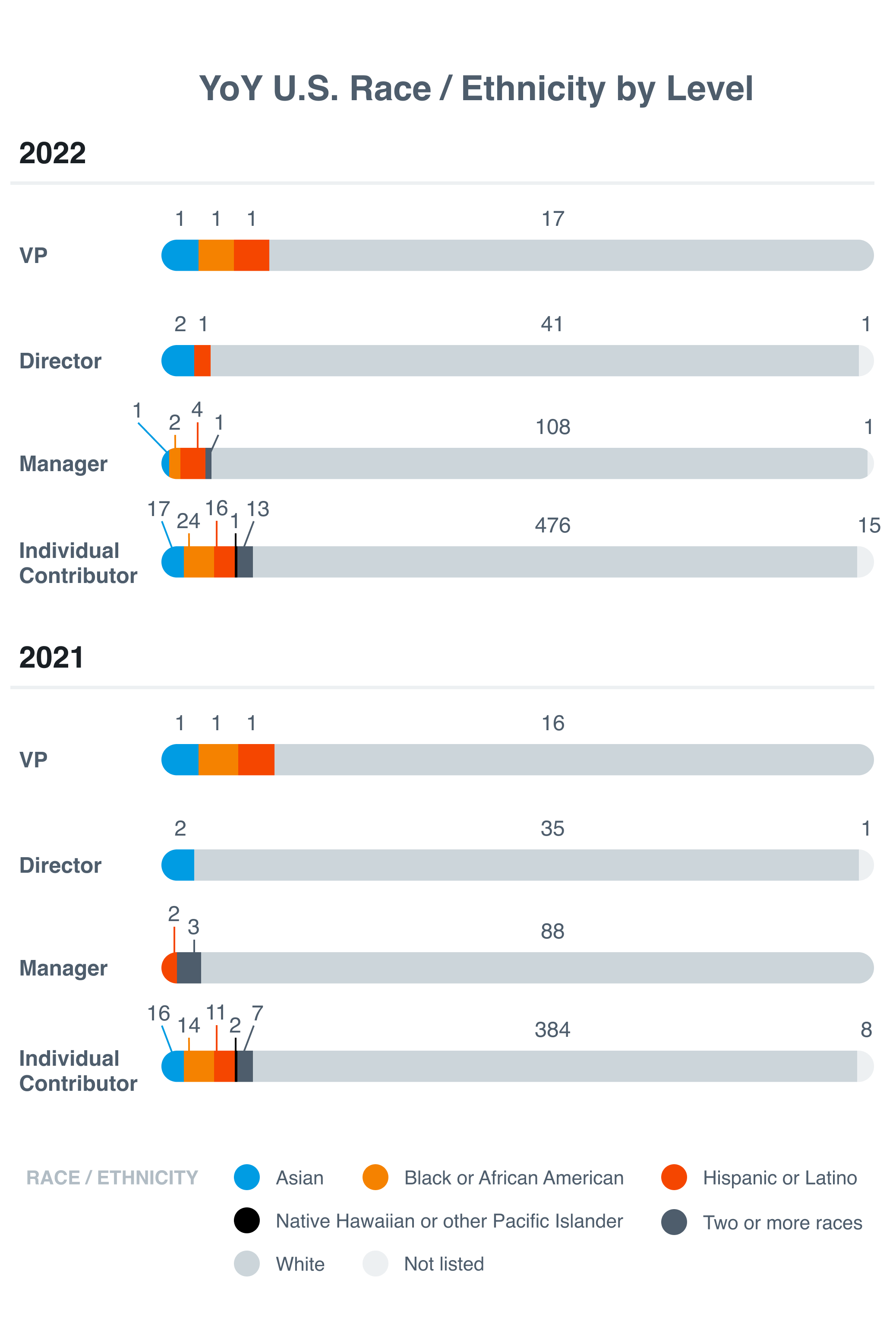
Underrepresented groups make up about 11.5% of all Hudlies. We notice a drop off in representation between individual contributors at 12.6% and middle managerial levels (6.8% of managers and 6.7% of directors), while the vice presidents and above group is at 15%. Similar to gender, our focus is on ensuring we’re removing biases and providing equal opportunities for advancement at all levels of the organization.
Age
As we dig into age data for the first time, we see that more than 80% of our population is under the age of 40, with almost half (48.4%) of our entire employee population in their 30s. These findings reinforce the importance of initiatives being launched this year, such as the new daycare center at HQ and our global family-forming care benefit.
Moving forward, we’ll continue to analyze this data to ensure we’re embracing different work styles across generations and promoting flexibility in our culture. Based on this data, we have the opportunity to seek out perspectives from those older than 40 to make sure our practices are fully inclusive of every age group.
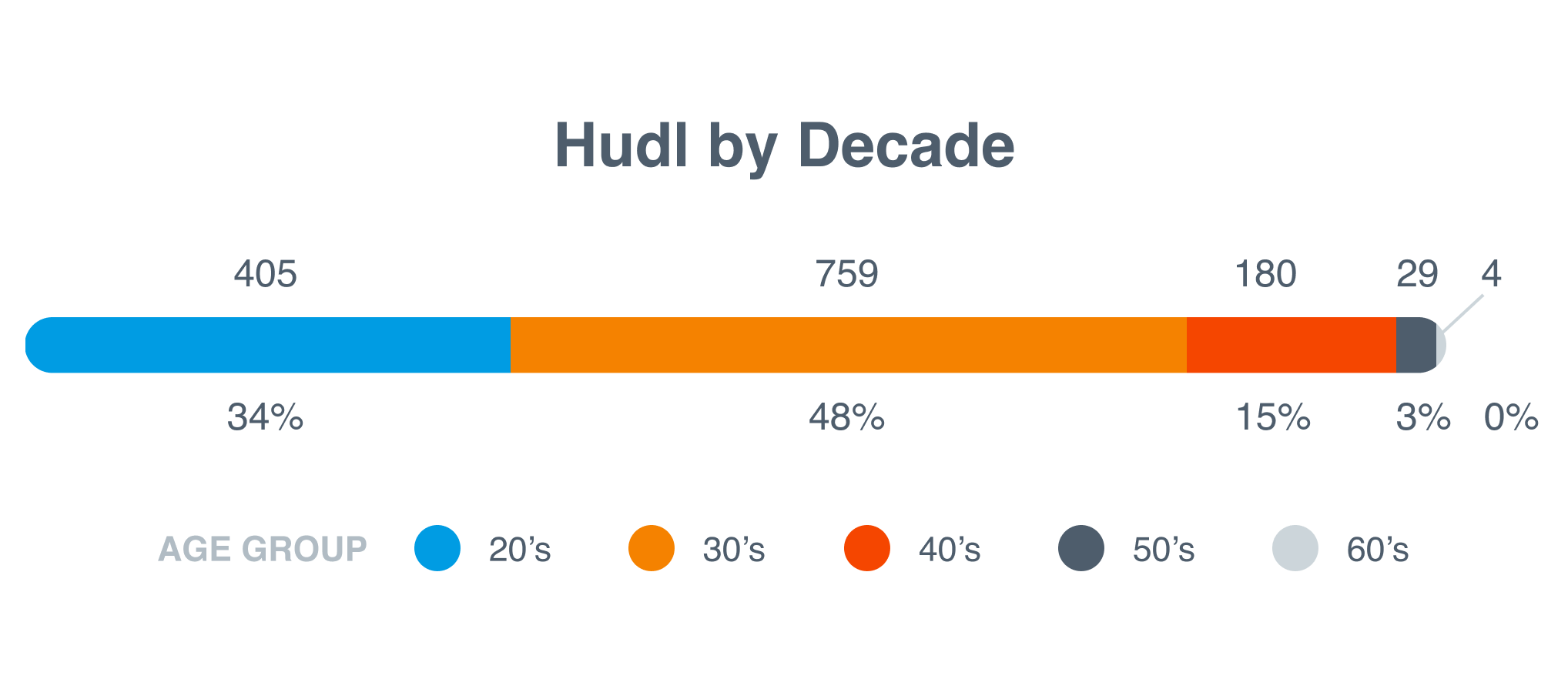
Interns
In 2022, our internship program continued to be a key piece to our talent strategy. We’re investing in bringing more interns to Hudl and making their experience here inclusive and valuable. As you’ll see in the charts below, our intern population is more racially/ethnically diverse and has greater gender parity than our current Hudl population, indicating that our interns continue to be an important source for diverse full-time talent.
As we bring more interns to Hudl from a variety of schools, backgrounds and identities, we need to ensure we’re providing quality manager and mentor support, intern community-building events, and connections to Hudl values and opportunities. If we continue to cultivate a welcoming environment where all interns can grow and feel they belong, we’ll be better prepared to attract and retain exceptional, diverse talent for future internships and/or conversion to full-time employees.
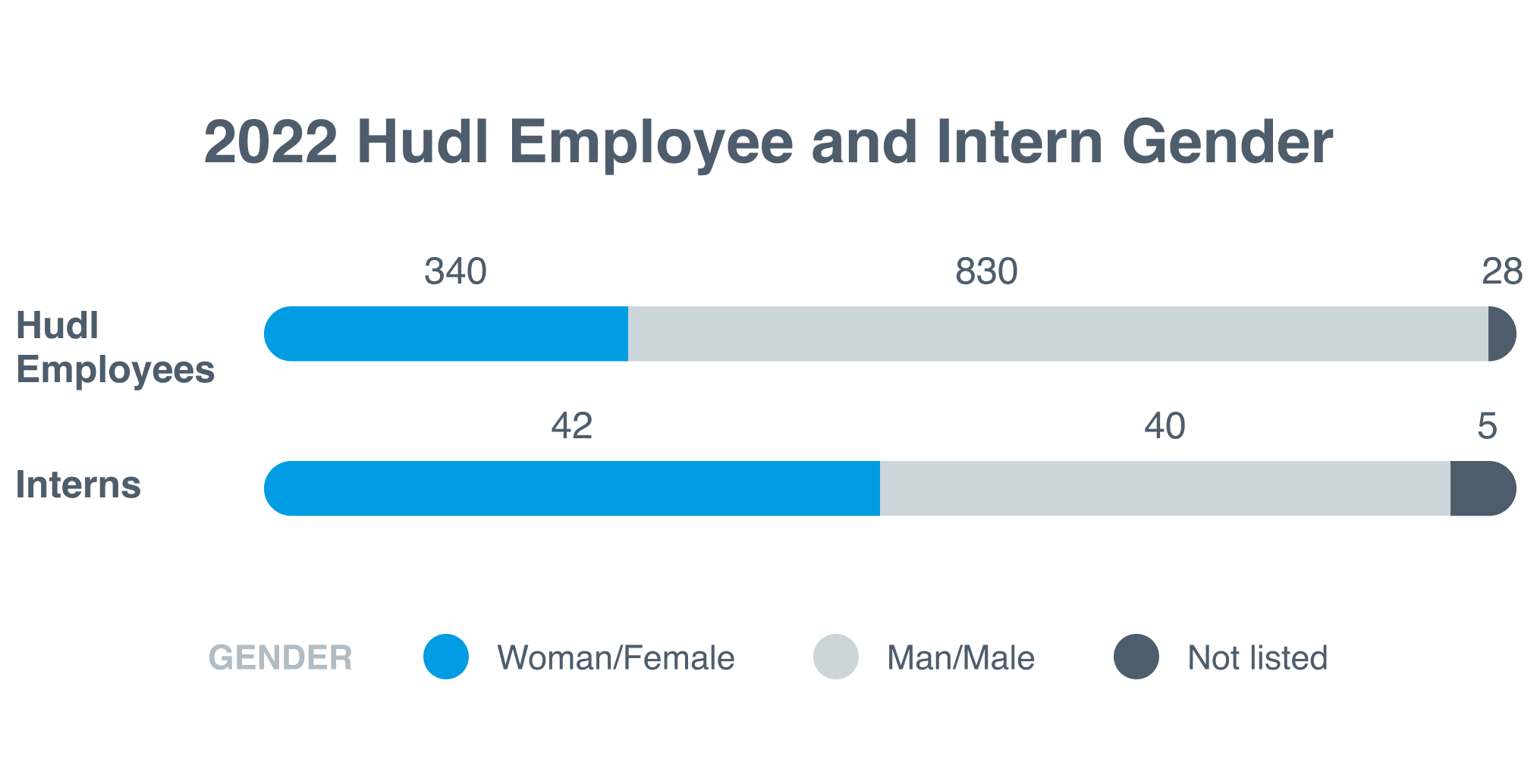
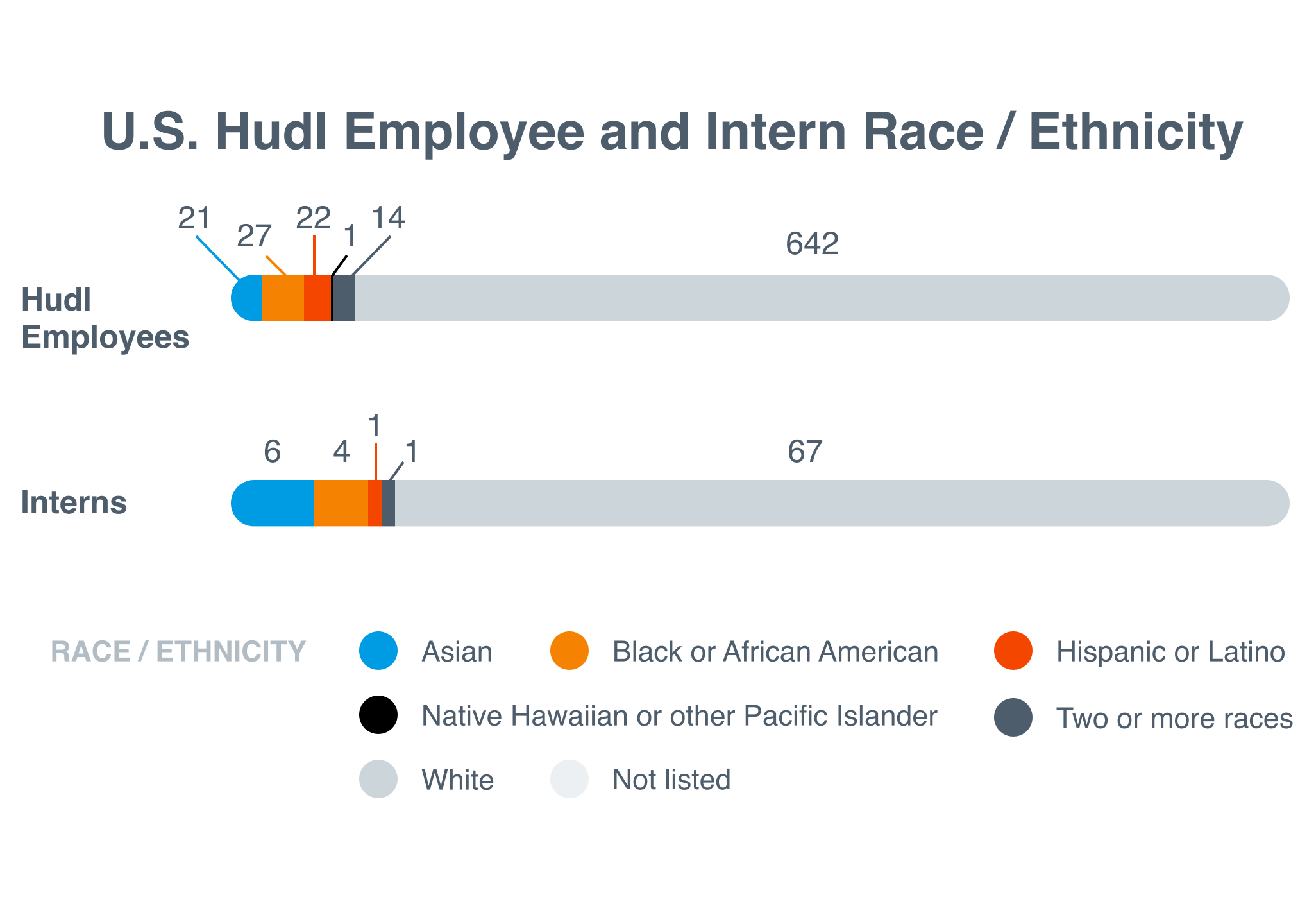
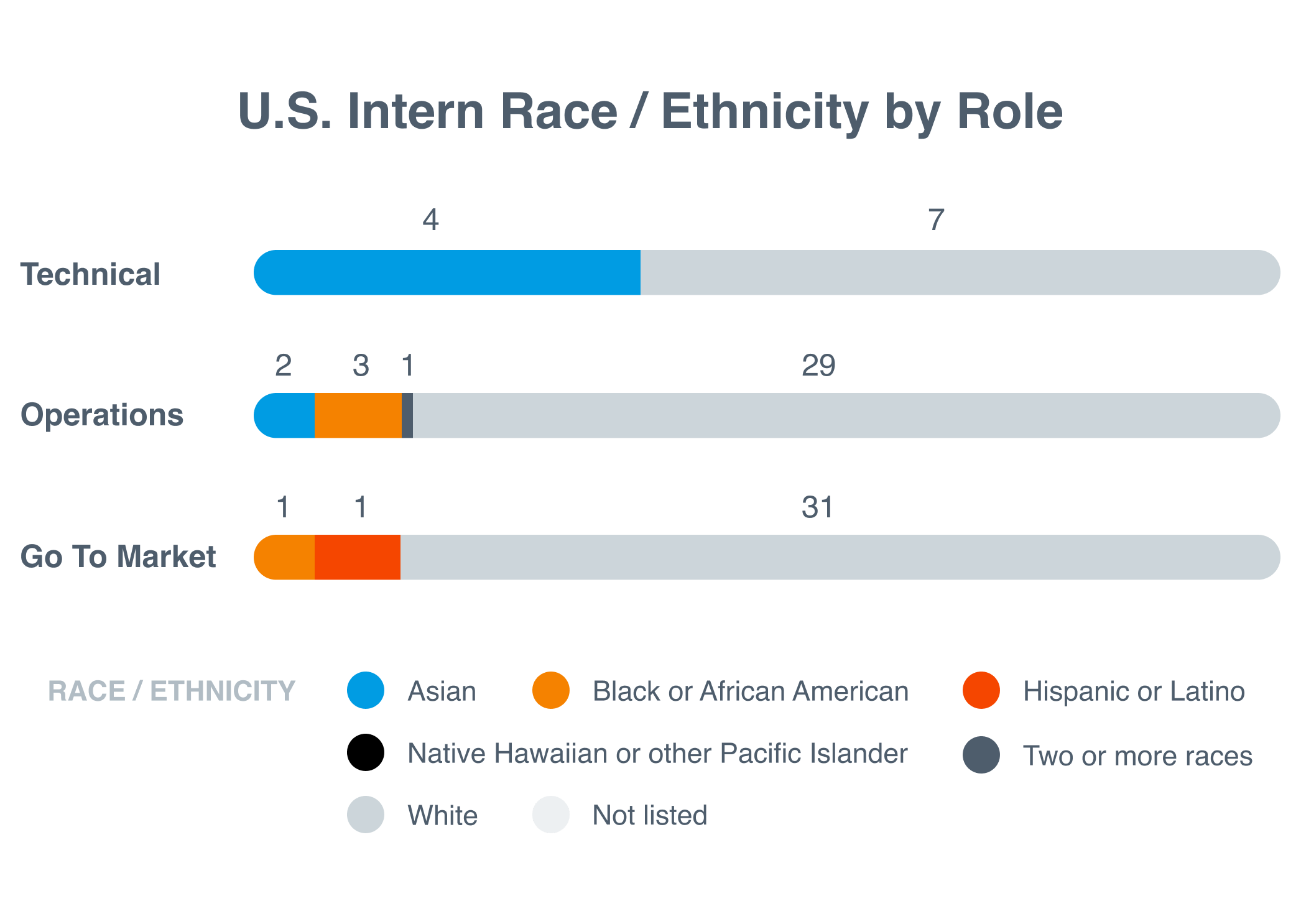

Hudl’s workforce is its greatest asset. We know it takes an intentional approach to attract and hire top talent across the globe that will design, build, code, sell, support and market our integrated suite of products. The diversity of our workforce at all levels and departments remains a top priority. In 2022, we set goals to continue recruiting a more diverse workforce.
Advancing Equity & Transparency in Our Hiring Processes
Working directly with hiring managers, our team continued to iterate on our hiring process.
- We defined more consistent interview questions.
- We built data-informed hiring practices to ensure that hiring managers were made aware of hiring patterns.
- We created an educational toolkit for hiring managers and teams that’s now a standard step of our hiring kickoff process. The toolkit’s goal is to create consistency and ensure more equitable processes are being followed. Included were standard operating procedures, hiring best practices and unconscious bias resources.
Our TA team piloted an analysis with U.S. Sales and U.S. Support, each of which has a high hiring volume and large impact on the makeup of the workforce. Each department’s leadership team received information on their applicant funnels and hiring numbers to create awareness of where they’ve been, where they are currently, and where they could be in regard to recruiting and hiring more diverse talent.
We’re also making sure that we talk about our commitment to DEIAB early in the hiring process, such as sharing our inclusion report more prominently and highlighting the impact that employee resource groups (ERGs) have within Hudl. More importantly, this also helps ensure we're bringing in candidates who understand this is a commitment at Hudl and who value this work.
To support equity and encourage internal movement throughout Hudl, we implemented a requirement that all open roles are posted internally for a minimum of five days to help maximize internal career development and retain skills and expertise of existing talent.
Connecting with Underrepresented Populations
In an effort to reach more diverse groups of applicants, we invested in a partnership with Mogul, one of the world's largest resources for diverse talent. Mogul equips Hudl recruiters with sourcing tools to target candidates from underrepresented groups. We hired a fulltime Talent Sourcing Specialist focused on identifying passive talent and ensuring more balanced applicant pools are being considered.
We attended several events to support our diverse hiring strategies, including the London STEM Women’s Graduate Career Fair, the Escalla Women in Tech Accelerator, and the Women of Silicon Roundabout. The team worked with STEM Women to find internal leaders (Amanda Jahn and Vassia Simaiaki) to lead workshops for “Interview & Applications” and “Advocating Yourself,” which helped provide insights and promote the Hudl brand.
Our talent management team deepened its focus on supporting communities and developing our internship program, which will build career pathways to Hudl. We are actively building partnerships with organizations focused on education and skill development among underrepresented demographics in the tech industry. The team is also broadening internship recruitment efforts and early career opportunities with schools, university programs and student organizations with more racial, ethnic and gender diversity.
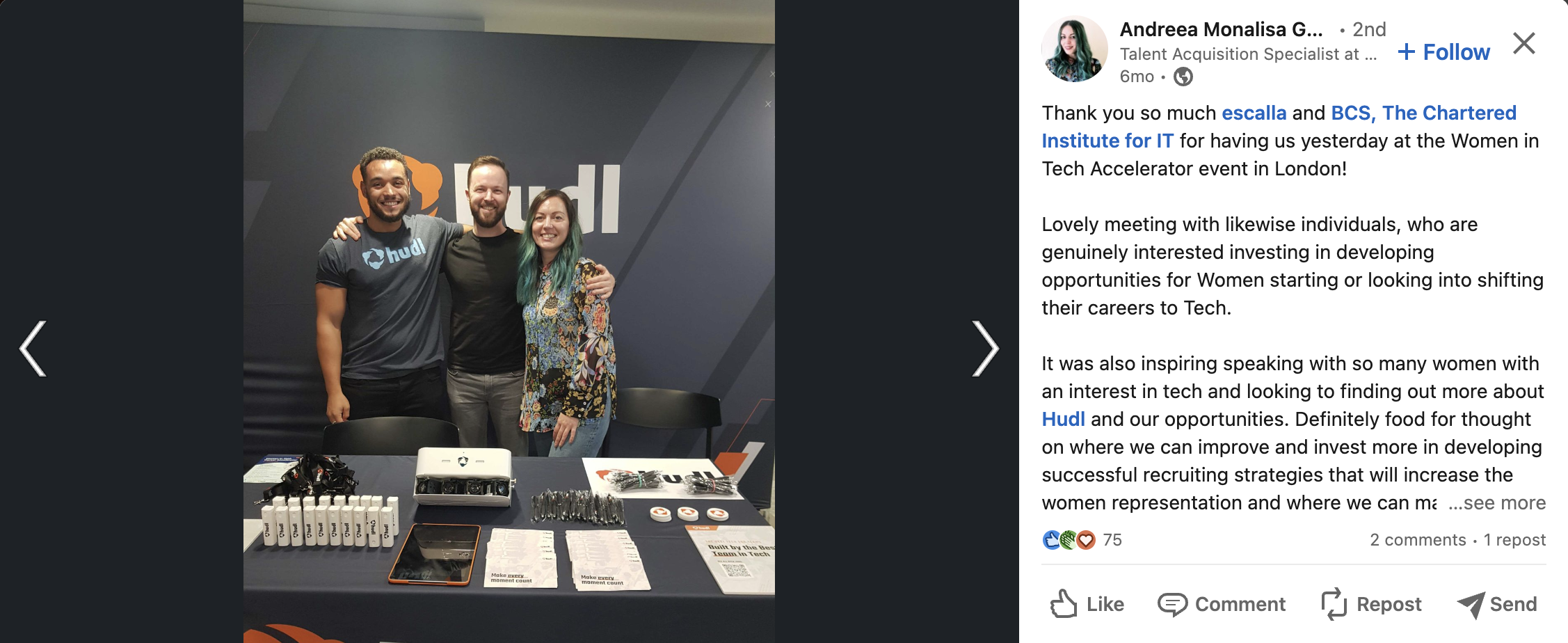
What’s Next for Talent Acquisition
We'll continue investing in practices that support top of funnel recruitment and increase diversity within our career pathways. To support these efforts, we’re working hard to develop even more objective and equitable interview processes that limit bias through structured questions, panel interviews and assessment tools. We’ll continue to improve our analytics and give our recruiters and hiring managers better tools for measuring progress and uncovering biases.
Building on the initial success of the Mogul partnership, we’re exploring recruiting tools that enhance our efforts on a global scale. We also plan to increase our presence at events and build community partnerships (e.g., Black in Sports Summit, Silicon Milkroundabout, Intern Omaha/Avenue Scholars and more) that assist us in attracting more women and underrepresented groups in technology.

Evolving Our Core Values
We continue to focus on creating a safe and welcoming environment that enables every employee to show up authentically at work. In 2022 we reevaluated and updated two of our five core values to better reflect our commitment to inclusion.
Fundamentally, the meaning behind the phrases were correct, but they didn’t represent exactly what we wanted to convey—they weren't as inclusive and as welcoming as they could be for everyone. And that was a perspective that I developed over time along my DEIAB journey. I love where our values landed. A lot of our efforts toward inclusion are reflected in not only the words in the values, but in the definition, the meaning and the ways that we act in accordance.
Our “Dominate” value became “Play to Win.” As we’ve increased representation across gender and grown internationally, we received feedback that “dominate” doesn’t carry the same positive, motivational connotations as it did in our early years as a company. What does hold true is the subtext that “if something’s worth doing, it’s worth being the best.” Nothing is given, and we have to constantly earn the right to win—but we do it with humility and integrity.
Our “We’re a Family” became “Win Together.” We genuinely care about our people and want them to care for each other, but we recognize that the family metaphor can blur the lines between professional and personal obligations. So, we turned to what we know best—sports. We know that no game is won alone. We’re people first, co-workers second and together we build an experience that’s flexible and allows everyone to thrive, all while having fun along the way. Above all, we lean into flexibility—trusting our team to do their best work and valuing outcomes over hours.
Expanding Our Inclusive Benefits
We set a goal to analyze and improve our benefits to be more inclusive. Our progress focused on empowering Hudlies to nurture both their careers and families in ways that are meaningful to them. We know navigating a family-forming journey can be difficult and costly, which is why our team now has access to health benefits to support them on whatever path they choose—pregnancy, assisted reproduction, cryopreservation, adoption, gestational carrier support and lifelong fertility care. We’re also excited to have partnered with Primrose Schools® to build an on-site daycare at Hudl’s Lincoln headquarters, which is slated to open in 2023.
Deepening the Impact of Our Employee Resource Groups (ERGs)
Our five ERGs, Community Champions, Her Hudl, Hudl Black, Mental Health Champions, Pride@Hudl, and our umbrella council for inclusion, Together@Hudl, continue to create a sense of community and belonging for their members. To drive engagement and promote ERG participation, the groups launched a number of initiatives in 2022 aimed at engaging their current membership and spreading awareness among the Hudl team. ERGs sponsored a number of networking, informational and social events during Hudl Week in June, debuting their new Hudl-branded logos. Throughout the year, the groups supported local community organizations, launched a new educational series, hosted book clubs, welcomed outside speakers and celebrated significant holidays and observances.
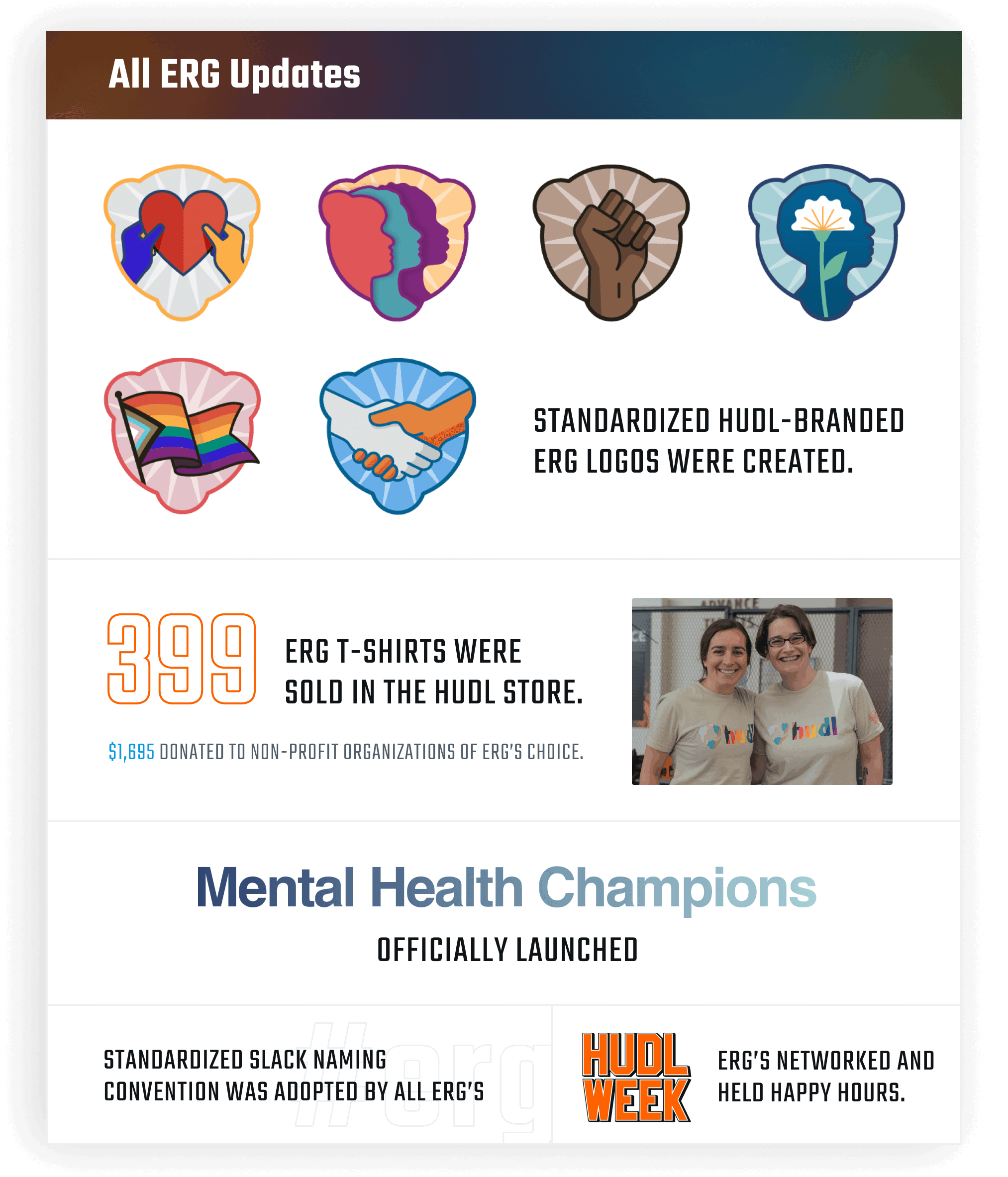
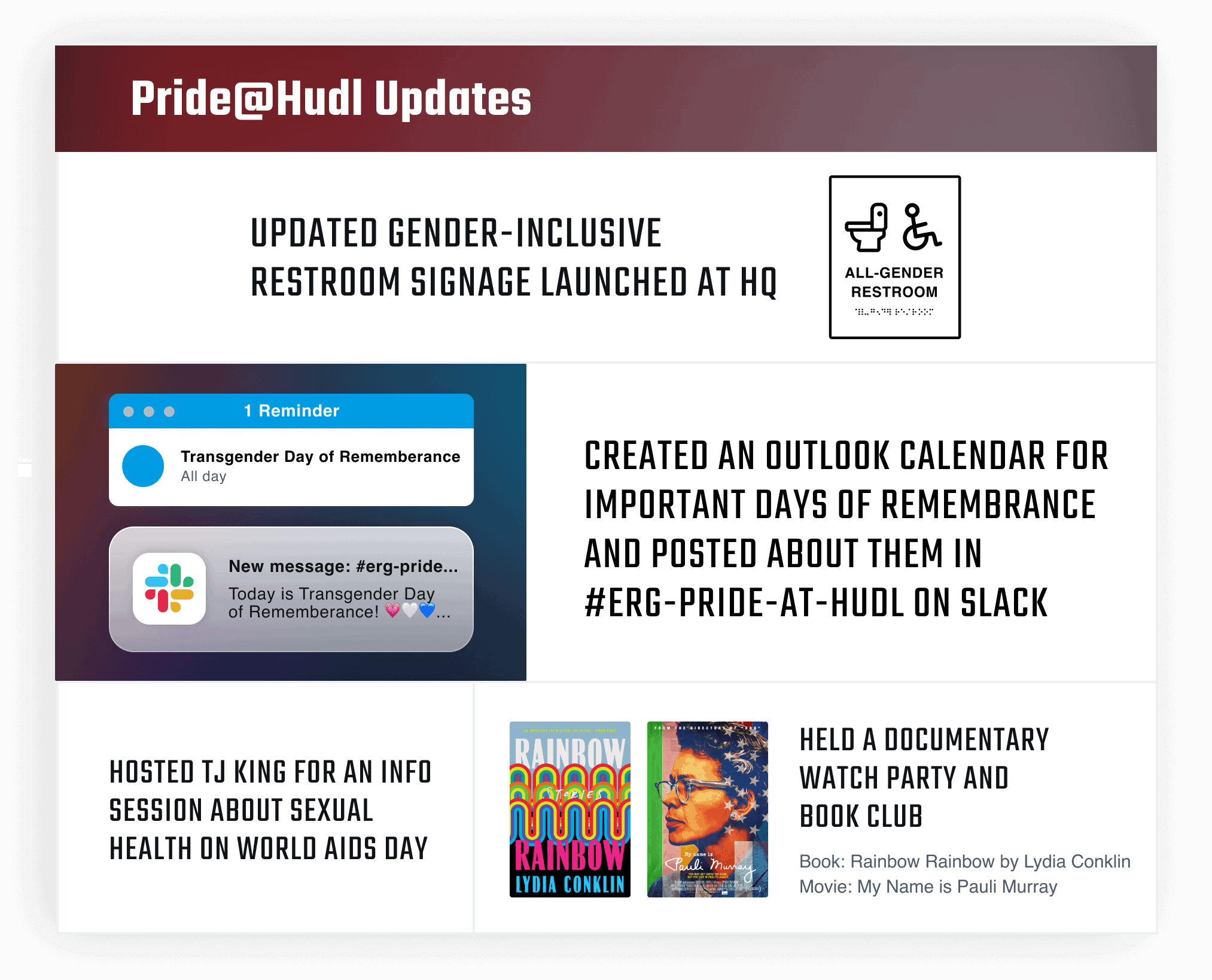
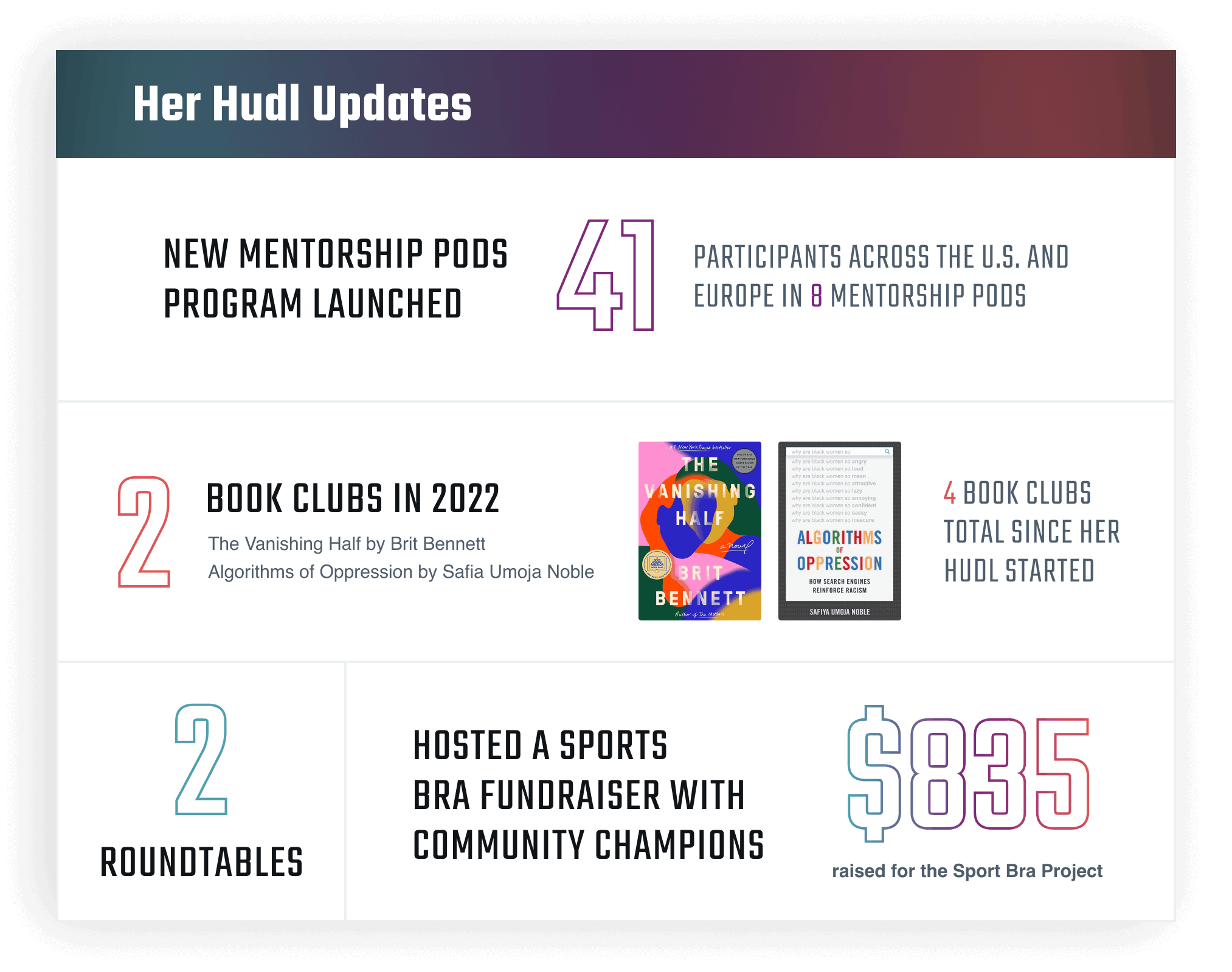
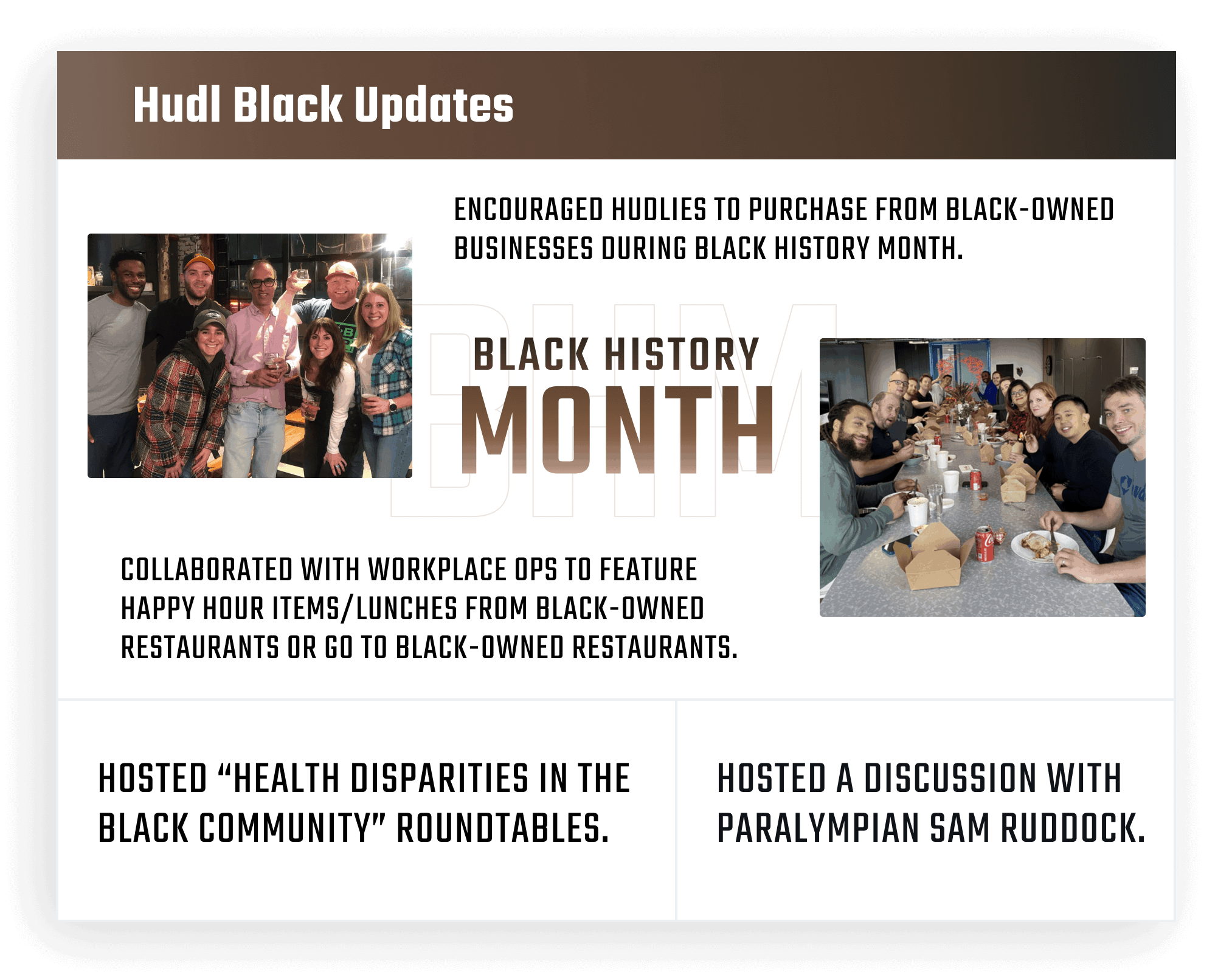
Empowering Women in Sports at BreakThrough Summit 2022
December 2022 marked our fourth annual BreakThrough Summit in partnership with WeCOACH, an organization that supports women coaches at all levels. BreakThrough Summit features a roster of powerful women and allies in sport as speakers and panelists. The sessions are packed with inspiration, encouragement and entertainment, leaving the audience feeling supported and empowered. The entire day-long program was planned, promoted and delivered entirely by Hudl and WeCOACH staff.
Watch the video below to go behind the scenes with this year’s BreakThrough creators.
What’s Next for Culture and Belonging
In early 2023 we launched Communities@Hudl. We already have a rich diversity of communities across the company, and we’re excited to make them easier to find and join. Communities are a way to find other Hudlies with common interests, build relationships, and get involved outside of daily responsibilities.
These groups are a way to build authentic relationships, expand networks and meet others outside of day-to-day teams. While ERGs are built around social causes or personal attributes, communities can be formed around any shared interest. We want to continue to build awareness and involvement in Communities@Hudl now that they’re officially launched. Building upon successes from the past few years, we're looking to further increase the reach and impact of our ERGs by better connecting them to important business initiatives.

In previous years, we set the goal of embedding programs that nurture and retain women, gender non-conforming and underrepresented groups. While that goal remains unchanged, we want everyone on our team to feel empowered and supported when it comes to growth and development. A major component of this is providing wider access to a variety of professional development and education opportunities.
Embracing Cultural Differences
At our company-wide Hudl Week event in June 2022, we welcomed facilitator Karen Cvitkovich, who led a leadership workshop and keynote session with the entire company that was based on the book, “The Culture Map: Breaking Through the Invisible Boundaries of Global Business” by Erin Meyer. The goal of the sessions was to better equip Hudlies with the ability to navigate and embrace the cultural differences that exist within our teams.
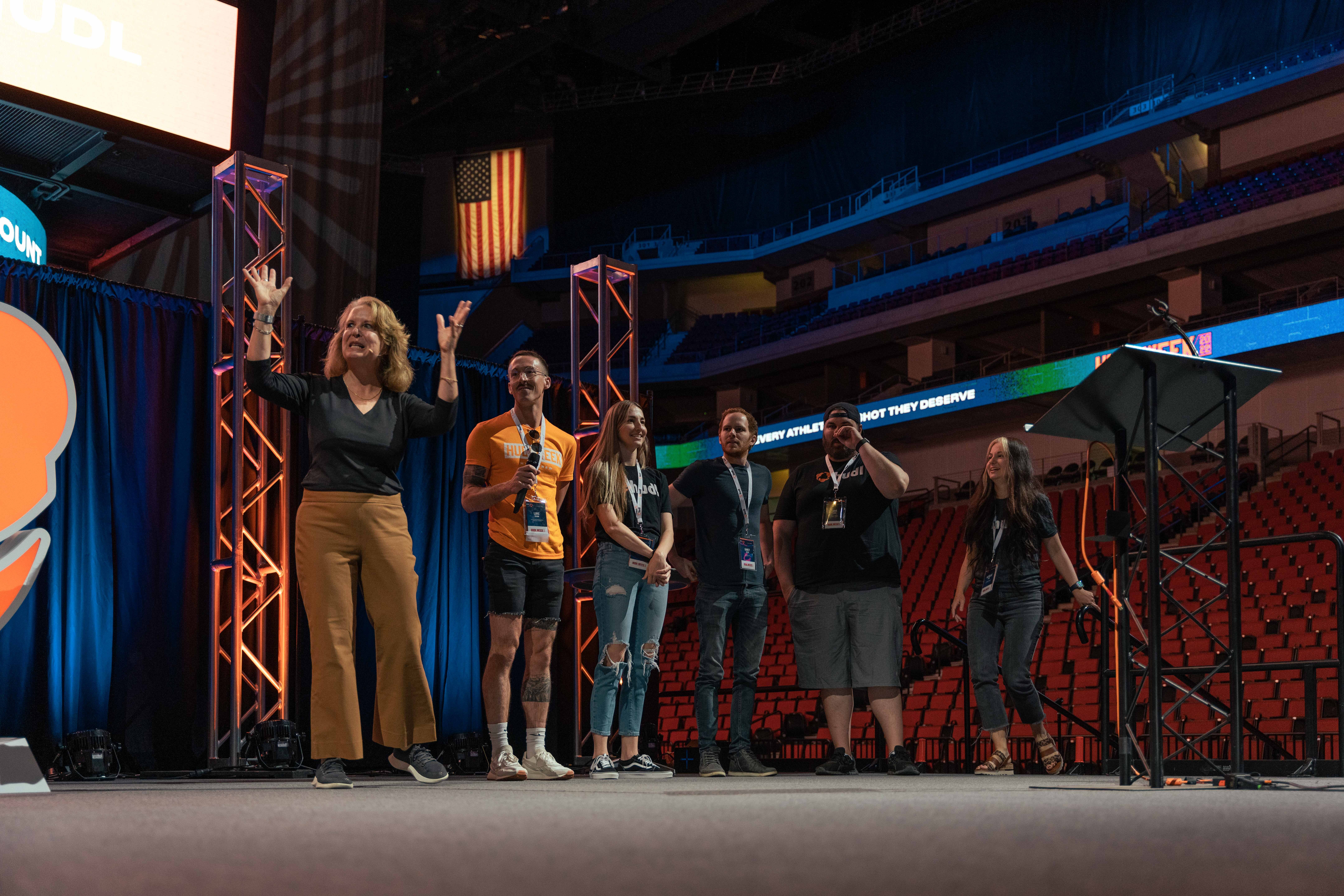
Educating Leaders on Inclusion
In 2022, our Senior Management team (VPs and above) began a 12-month inclusive leadership program. It’s important that we hold our managers and people leaders to a higher standard with respect to their awareness and understanding of unconscious bias, psychological safety and other relevant DEIAB topics.
Providing New Learning Opportunities
Last year we offered new learning opportunities that empower every Hudlie to manage their own development, regardless of level, which is key to creating an equitable and engaging environment. We launched our corporate library (powered by Libby), with content curated by Hudlies, for Hudlies, and anyone can request new books to be added. We also introduced a new iteration of Hudl University, a program that allows any subject-matter expert at Hudl to teach an instructional course.
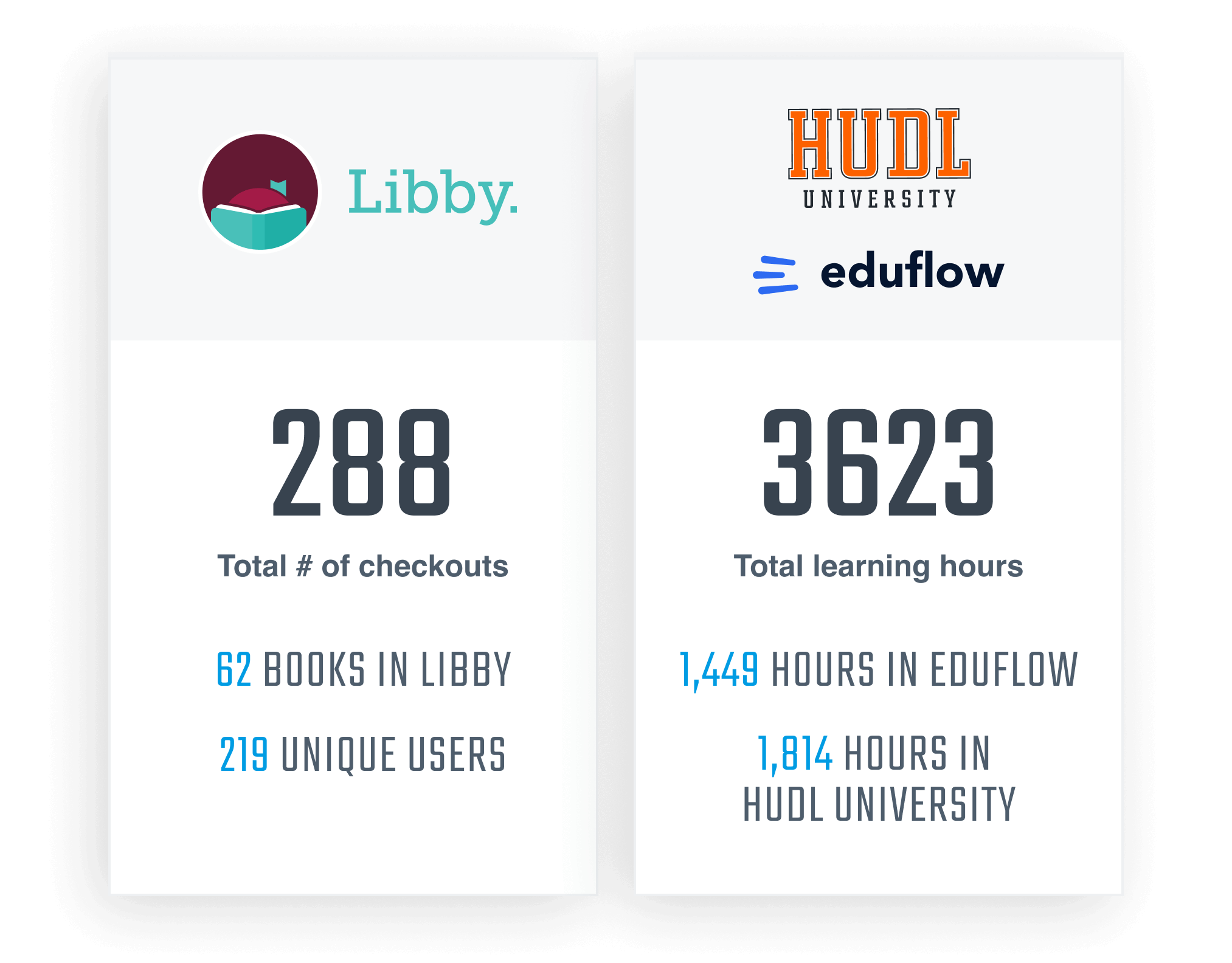
What’s Next for Education and Professional Development
In 2023, we’ll continue to deliver our Inclusive Leadership Training to the Senior Management team and work to embed inclusivity into all of our key touchpoints with Hudlies: new-hire orientation; manager training and upward feedback; and core performance competencies.
Our management development efforts center around this core ideal: when managers are at their best, they are able to empower their team to be their best. Our new management strategy identifies inclusion and community as key pillars of manager success. We have multiple projects in flight, including a new management framework and further investments to upgrade our learning offerings.

As we’ve matured and grown globally, it’s important we play a bigger role in giving back to our communities, and this needs to be a company-wide focus. Last year, we set a strategic theme focused on social responsibility. This goal isn't just about increasing the dollars we donate and hours spent volunteering. That's part of it, but it's also about finding ways to give back that leverage our strengths and align with our belief in the power of sports. Social responsibility at Hudl isn’t just about what we can do as a company, it’s how we can empower our team to create good in the world. It provides a space for our team to find others with common interests and build a sense of belonging.
Supporting Volunteerism
We motivated the team to use our flexible time off policy to get involved in causes they care about, and encouraged Hudlies worldwide to spend eight hours per quarter giving back to their community. Leaning into this flexibility is also more inclusive for those with demanding lives outside of work.
The policy has already supported countless examples of giving back: Haleigh Brouillette drove local refugees to medical appointments; Elizabeth Cain read to fifth graders on Read Across America Day; our team in Barcelona scheduled afternoons to clean up their local beach. We love the ways Hudlies are giving time back to their communities, and our Community Champions ERG is using the volunteer time off data to understand how we can create more organized volunteering opportunities based on the interests of Hudlies. Surveys tell us that 54% of Hudlies volunteered in the past year and we hope to continue improving this number.

In the U.S., 15 team members participated in the TeamMates Mentoring Program. These Hudlies have committed to mentoring young students for an hour each week during the school year, from the time they sign up to when the student graduates high school. Hudl has partnered with TeamMates for several years, both through encouraging participation and sponsoring their annual gala.
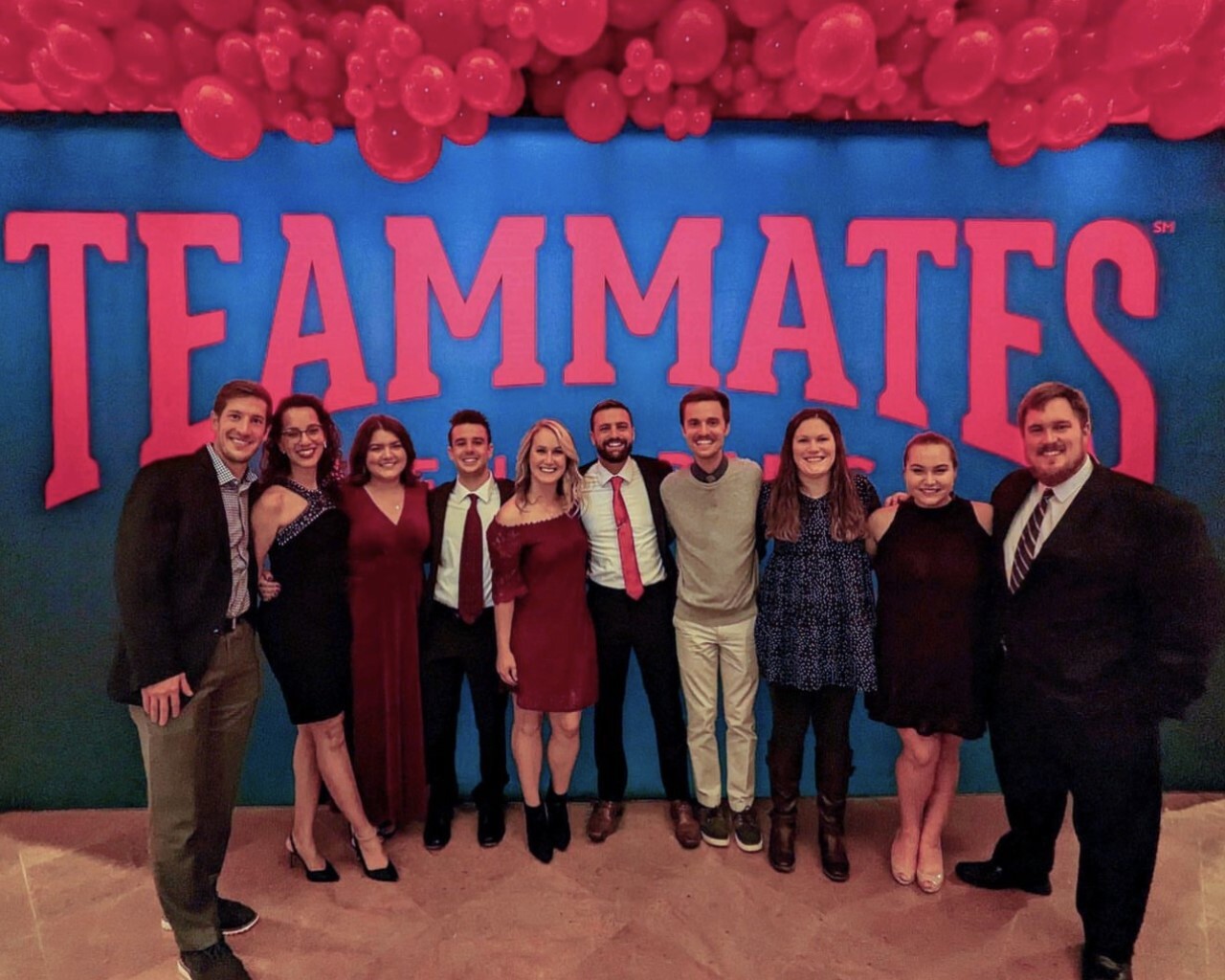
Lincoln, Nebraska-based Hudlies further supported children through Junior Achievement and the Food Bank of Lincoln’s BackPack Program. Through our involvement with Junior Achievement, 15 team members volunteered in 20 classes—helping Junior Achievement of Lincoln reach more than 19,500 students. Additionally, 13 Hudlies volunteered with the BackPack program during the school year, serving more than 1,500 people in the community. The team in Den Bosch, Netherlands also organized a donation drive for non-perishable food and personal care items for their local food bank, and committed time to volunteer at the food bank.
Promoting Corporate and Employee Giving
We used our global reach and scale to make an impact as a company. We announced the Hudl Foundation which will help us better invest and manage charitable contributions.
In partnership with United Way, we held our first workplace giving campaign in 2022. The team raised more than $83K USD, including a $35K USD Hudl match. 10.8% of Hudlies participated from across the globe—meeting both our fundraising and participation goals. United Way of Lincoln and Lancaster County, and the United Way of the Midlands, awarded Hudl the New Partner Award for 2022 due to the incredible involvement from the team.
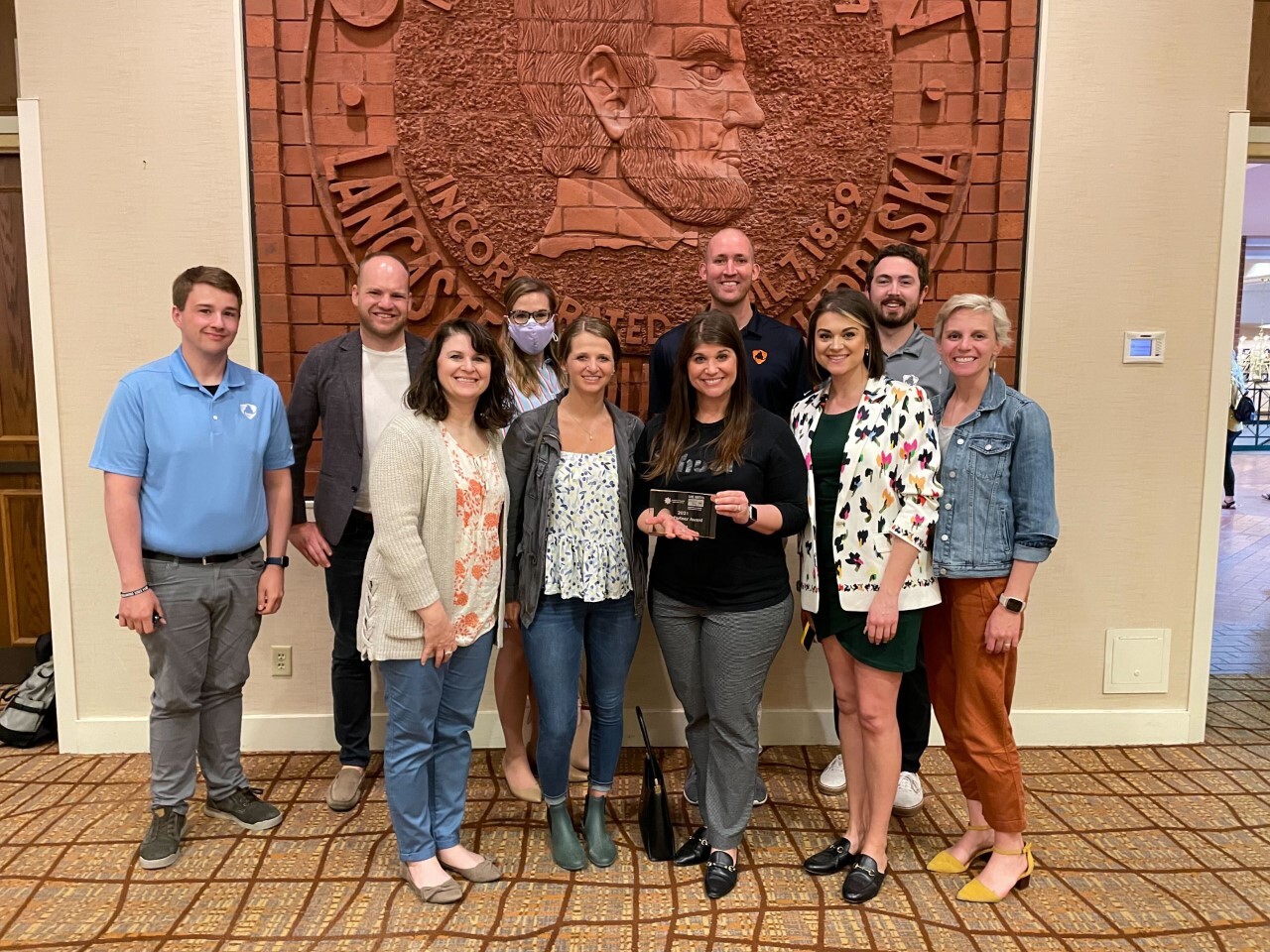
Hudl awarded Level the Playing Field grants to our third cohort of recipients, in partnership with Gatorade. The three organizations—Girls Leading Girls, NorthStar Foundation and Kinetic Kids—received free access to Hudl’s suite of tools to match their teams’ needs and were featured in a successful Hudl Studios original series. It’s easy to tout the numbers, but NorthStar’s story shares the real impact these grants can have on organizations and athletes.
What’s Next for Social Responsibility
We’re in the early stages of defining corporate social responsibility at Hudl. Leaders from across the company have been collaborating on a cohesive, sustainable and long-term strategy that gives us the flexibility to mature our approach over time. The work ahead is to ensure we leverage our unique strengths to make a positive long-term impact on our communities, customers, workforce and stakeholders.
At the time of writing this report, we just completed our second annual corporate giving campaign with United Way. We leveled up the campaign this year with a new theme, raffle prizes, opportunities for volunteering in each region, and an ambitious goal to raise $45K USD from the team with a $45K USD corporate match. The team showed incredible engagement with the campaign—raising over $74K USD and Hudl increasing our corporate match to $60K. 32% of the team participated in the campaign, with even more participating in local volunteer opportunities. We were thrilled to see the campaign take off and to contribute over $134K USD to United Way partners across the globe.
Outlining the Hudl Foundation’s giving strategy will be a big focus for 2023. The foundation can be a catalyst for serving our communities, and we’re excited to see where we can take it.

2022 brought some important shifts and improvements in our approach to creating a more inclusive Hudl, and we’re excited to build upon the foundation that’s been laid over the past few years. As we often remind ourselves, we’re playing the long game and this work takes time. We hope to see some of those efforts pay off in bigger ways in 2023, in addition to adjusting and aligning our strategies across the company.
In 2023, we’re making inclusive leadership a top priority at all levels of management in Hudl. We recognize the need to promote equity and transparency in our hiring practices while identifying touchpoints throughout the employee lifecycle to integrate inclusivity. We plan to leverage and connect ERGs and increase participation and impact in Communities@Hudl. Improving our measurement and reporting will be key to refining our long term goals and better understanding recruitment, retention, engagement and DEIAB across various demographics. We’re committed to making this data accessible to all parts of the business, giving team leaders insight into team snapshots and trends.
If this work is important, then it has to be a part of our goals. I'm really happy that over the last few years we've continued to build [inclusion] into the way we think about our most important goals as a company.